Cartier
Cartier Crash ‘First Light’
Says Cyrille Vigneron, Cartier’s brilliant CEO and the maison’s greatest leader since the legendary Alain Dominique Perrin: “The only certainty for the future is uncertainty. What we will see with increasing frequency are the type of black swan events that can cause global change. As an industry, we need to safeguard against this. The best way to do this is to ensure the singularity and durability of your brand.” What Vigneron means is that, in times of crisis, the consumer will spend on objects that are safe havens, that are utterly unique, iconic and that have stood the test of time. This is precisely how Vigneron has positioned Cartier’s watch business, which is on the cusp of becoming the third largest watch brand in the world. By reconnecting it with Cartier’s unique history in design and elegance, he has made his maison one of the most singular and durable brands on the planet.

Cyrille Vigneron became CEO of Cartier on January 1st, 2016 and has since built up the resilience of the brand by reviving its rich history of elegance for today's audiences. (image: Cartier)
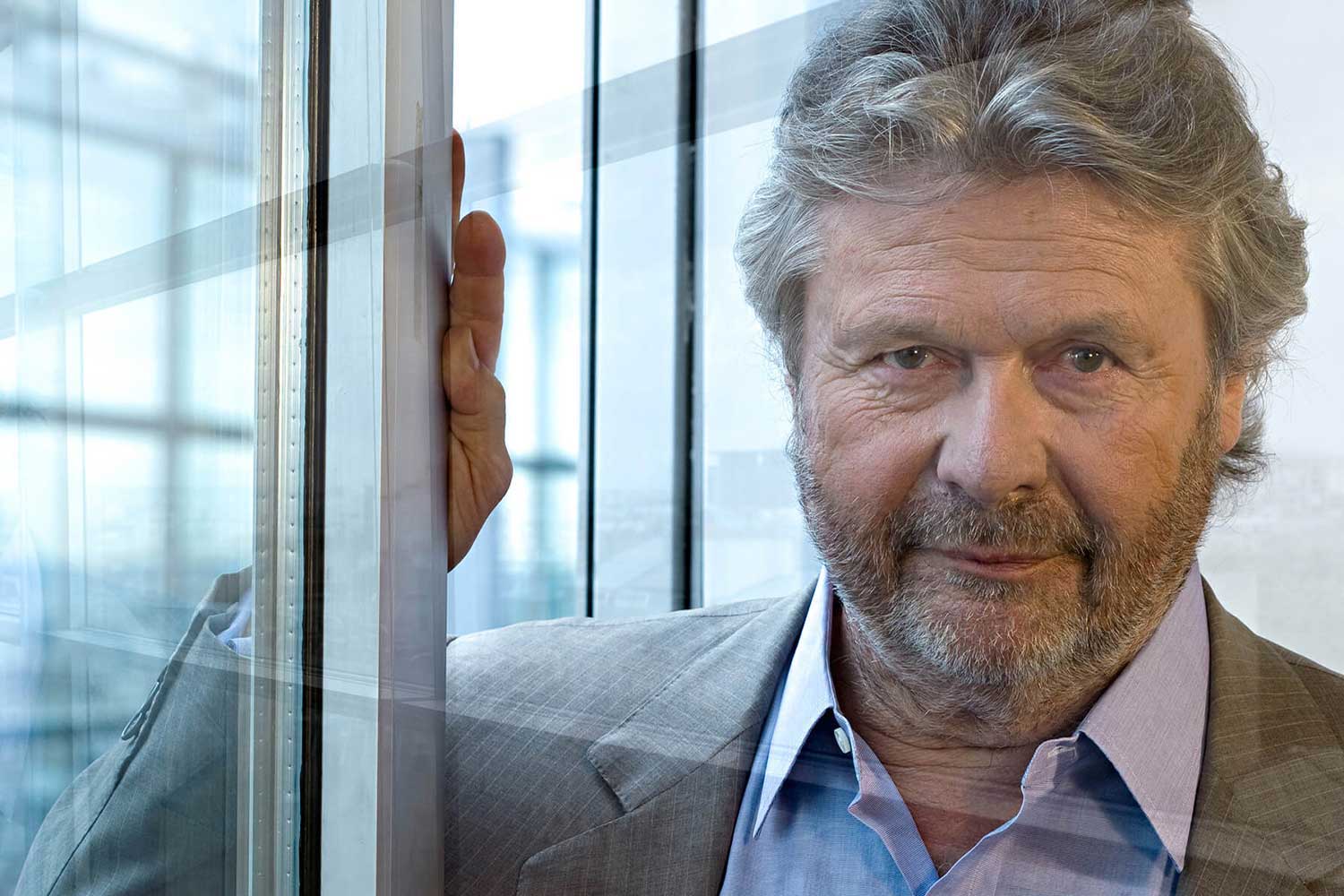
Alain Dominique Perrin, the enigmatic firebrand, was head of Cartier from 1981 to 1998, before rising to helm the Richemont Group in early 1999. During his tenure, he spearheaded Cartier's development overseas from its established positions of its three houses, and defined the term "modern luxury" through the Must de Cartier line of objects. Cartier's current global brand recognition can be attributed to his strong leadership. (image: Revolution©)
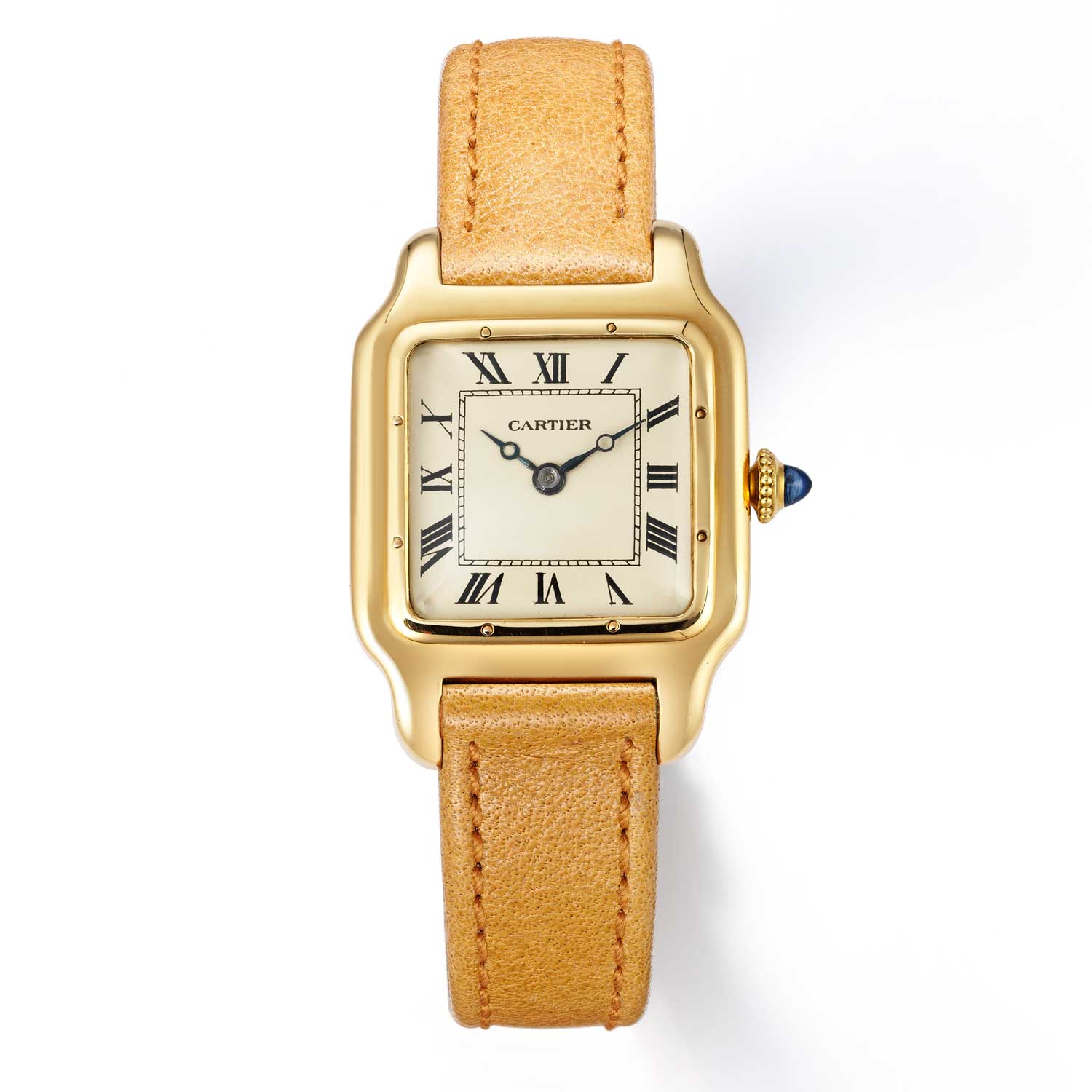
The Santos-Dumont was created in 1904 for Louis Cartier's friend, aviator Alberto Santos-Dumont. However, it was only commercialised in 1911, following which it officially took on the name. This particular example dates from 1912. (image: Cartier)

The original Tank was first designed by Louis Cartier in 1917, inspired by the top profile of the new Renault FT-17 tanks that fought in the World War I. It was introduced to the public in 1919 in a series of only six pieces. With its angular brancards, it is now known as the Tank Normale to differentiate it from the Tank Louis Cartier, which has rounded brancards. This example dates from 1920. (Image: Cartier)
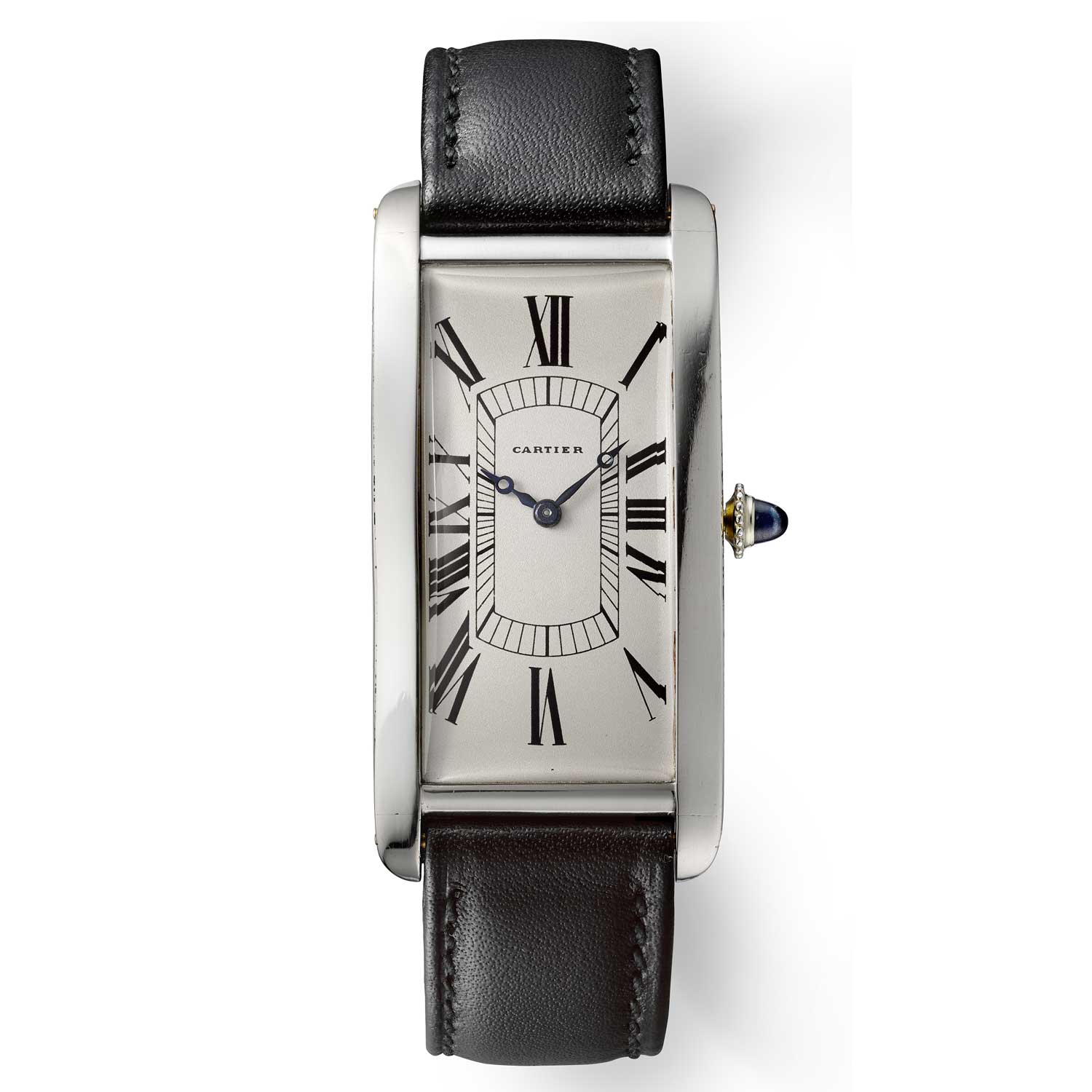
The Tank Cintrée was introduced in 1921, just two years after World War I and its elongated and curved profile was a completely radical design. It captured the spirit and optimism of the roaring '20s and was just in time for the increasing popularity of wristwatches amongst the public. This Cintrée is from 1924. (image: Cartier)
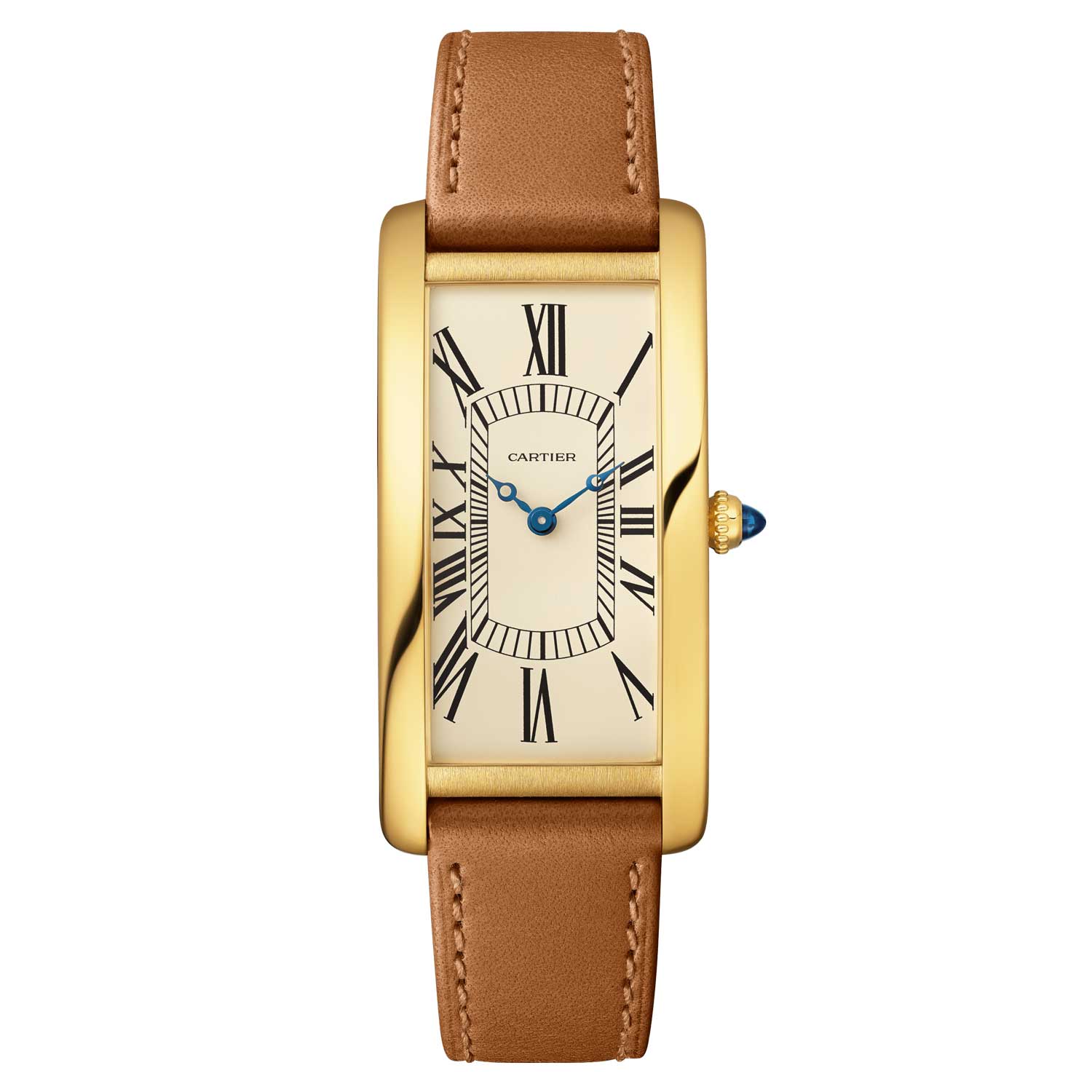
In celebration of the 100th Anniversary of the Tank Cintrée in 2021, Cartier created a faithful reproduction of the original, right down to making it not water resistant, exactly like the original. (image: Cartier)
But in the pantheon of Cartier’s incredibly shaped watches, there is one model that has attained near mythical status. Its mere appearance is able to stop even the most jaded watch collector in his or her tracks and send their heart into palpitations. In many ways, it contrasts dramatically with the maison’s most recognizable designs. Unlike the Tank or the Baignoire which are harmonious in form, it is utterly asymmetrical. Amusingly, even the famous Tank Asymétrique is, in the end, a very symmetrical watch as it is a parallelogram in shape. This timepiece in question is most assuredly not. Also, while many of Cartier’s most famous creations were born in the early 20th century, this timepiece was created a full 50 years later. Finally, while the majority of Cartier’s legendary icons sprung from the extraordinarily imaginative mind of Louis Cartier — eldest son of Alfred and grandson to the maison’s founder Louis-François Cartier — this watch was created by his nephew Jean-Jacques.
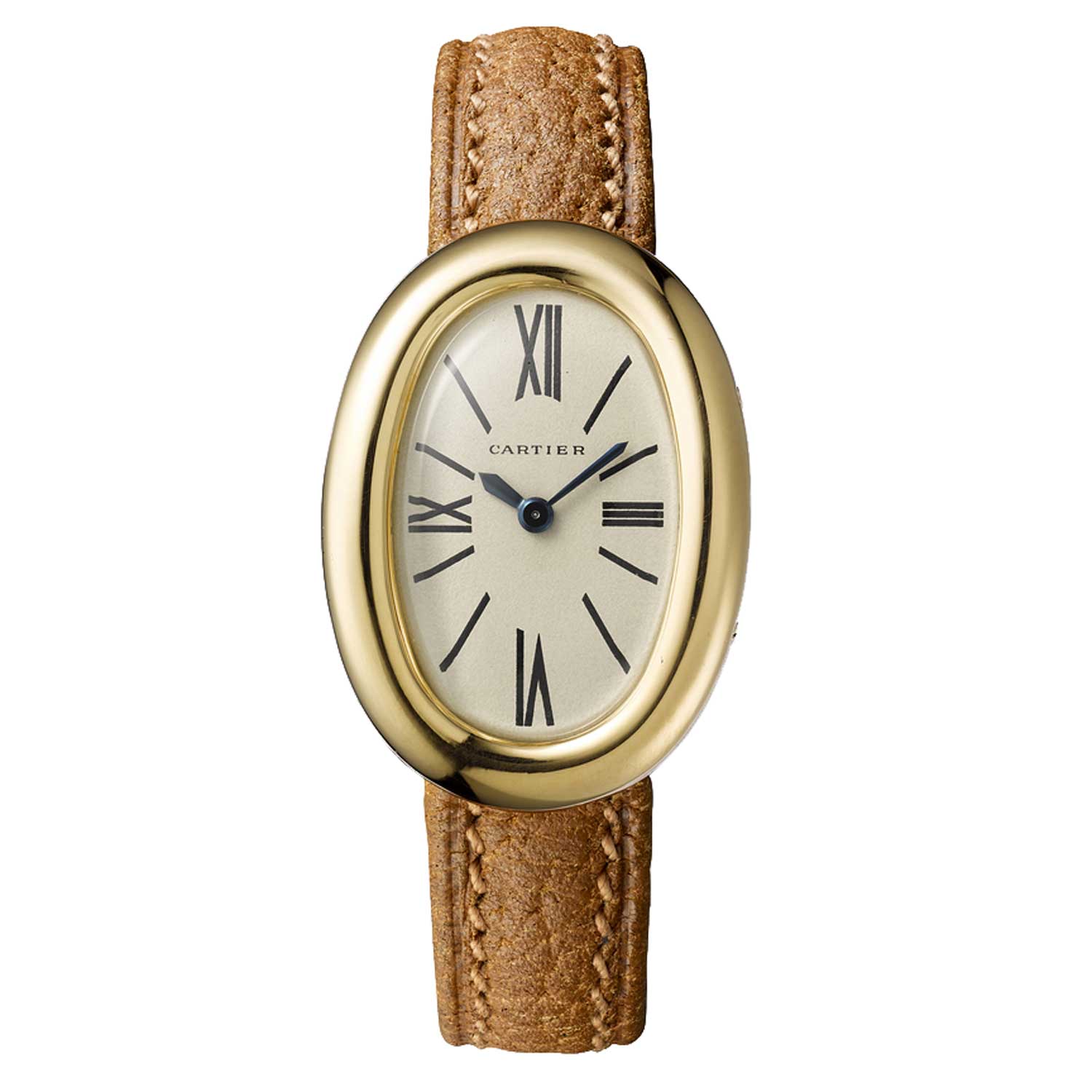
Before coming up with his iconic rectangular watch designs, Louis Cartier experimented on the traditional round shape of a watch's case by stretching it into an oval, and the Cartier Baignoire or 'bathtub' was born. This original example dates from 1912. (image: Cartier)
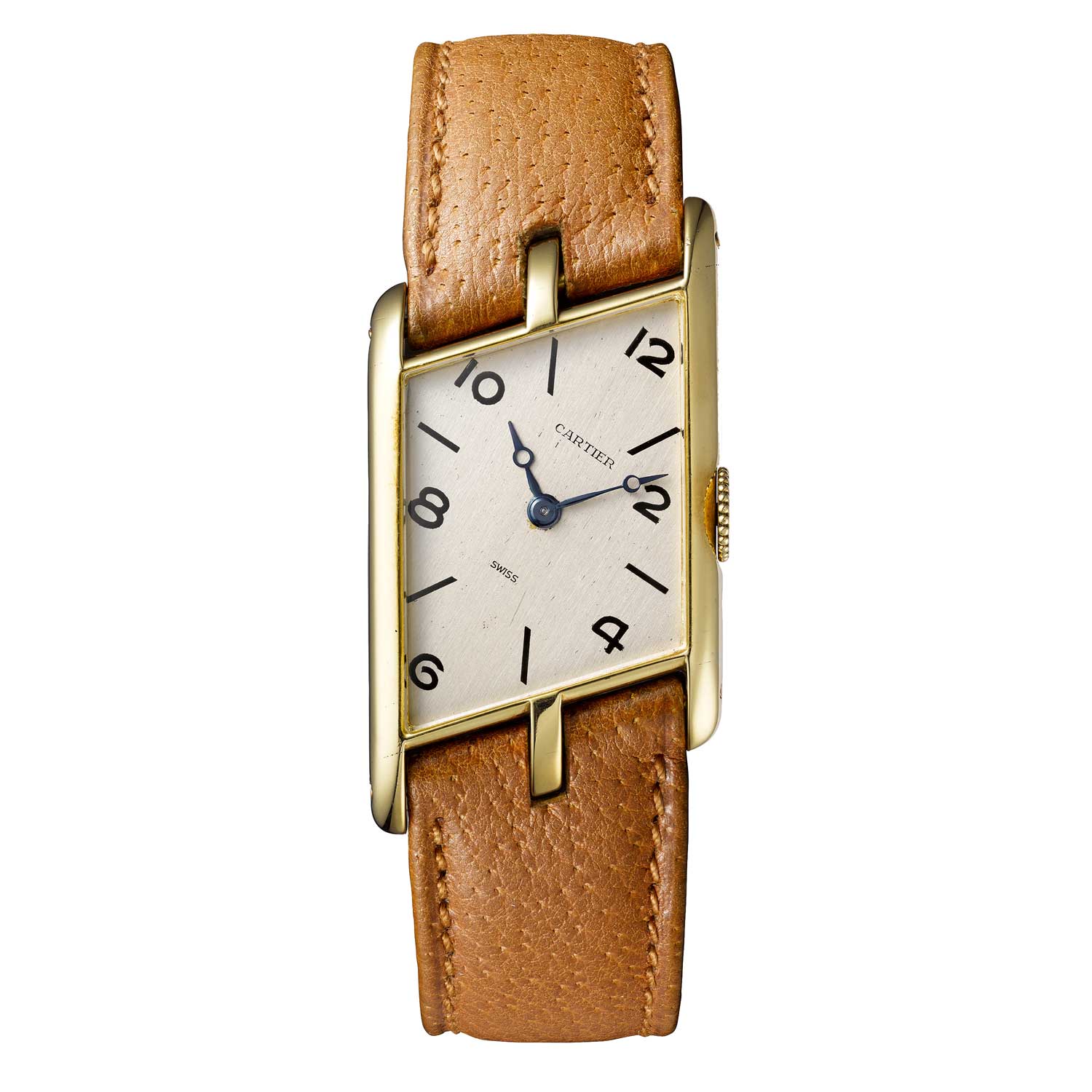
The Tank Asymétrique from 1936 would be the last iteration of the rectangular Tank shape from the brilliant mind of Louis Cartier, who passed away in 1942. It was supposedly created to make telling time easier. (image: Cartier)
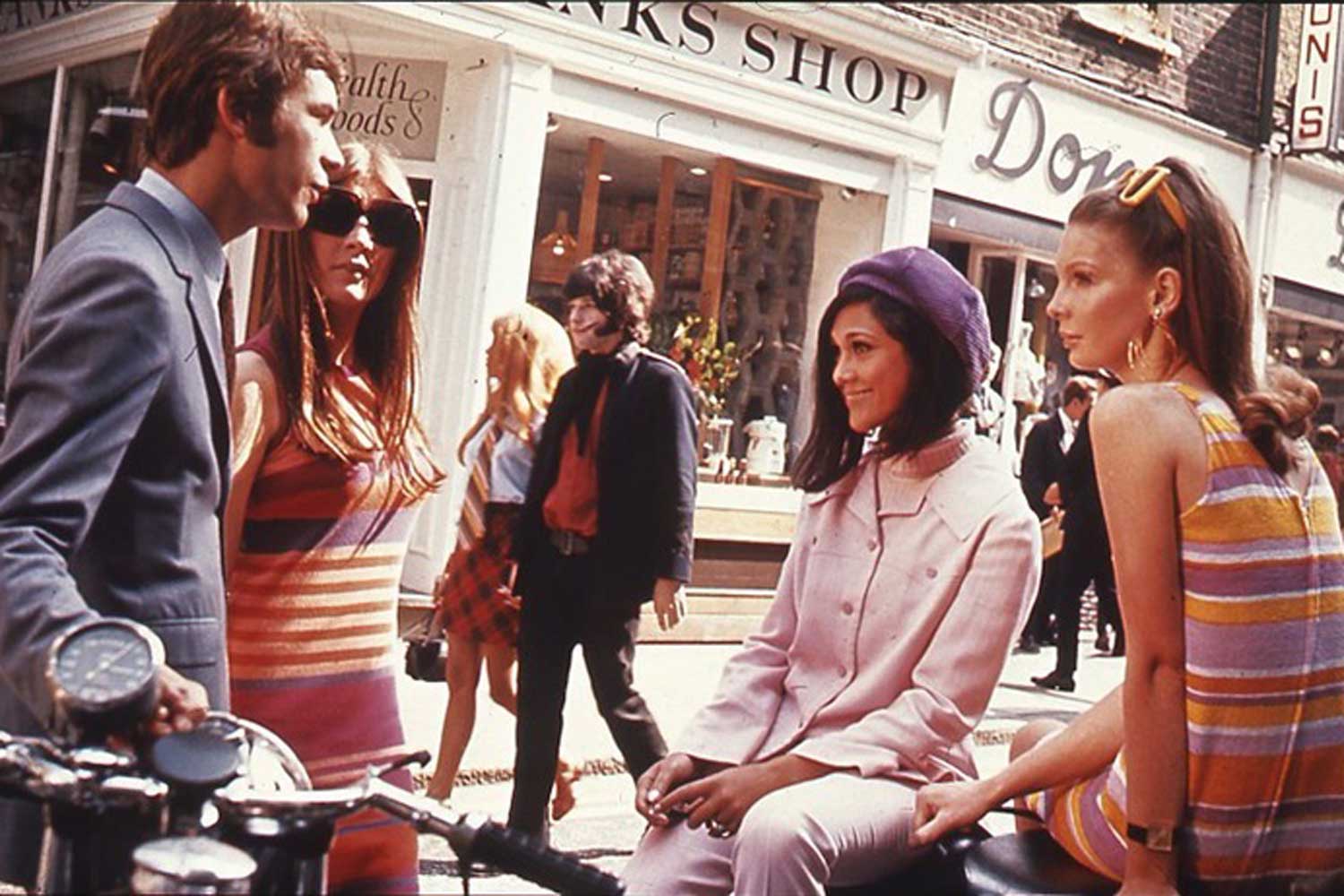
'Mod' (short for modern) culture was representative of the evolving cultural and social values of 1960s London. The bold and colourful outfits of the stylish mod set stemmed from a desire to break away from the 1950s styles of dress of their parents' generation. A group of mods seen here on London's Carnaby Street in 1969. (image: National Archives London)
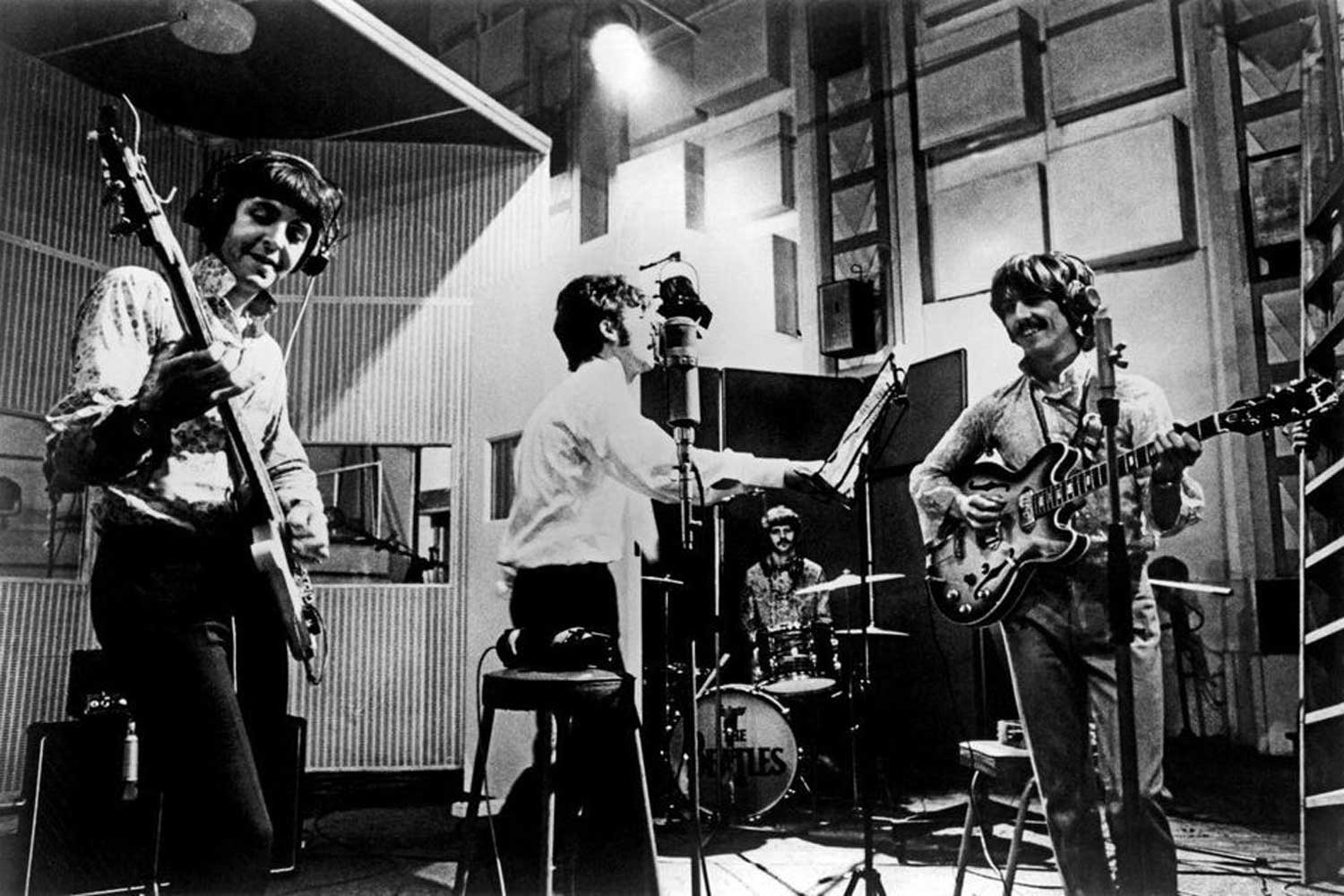
The Beatles rehearsing their song 'All You Need Is Love' for 'Our World' - the first live satellite uplink performance broadcast to the world on June 25, 1967 in London. (image: Michael Ochs Archives/ Getty Images)
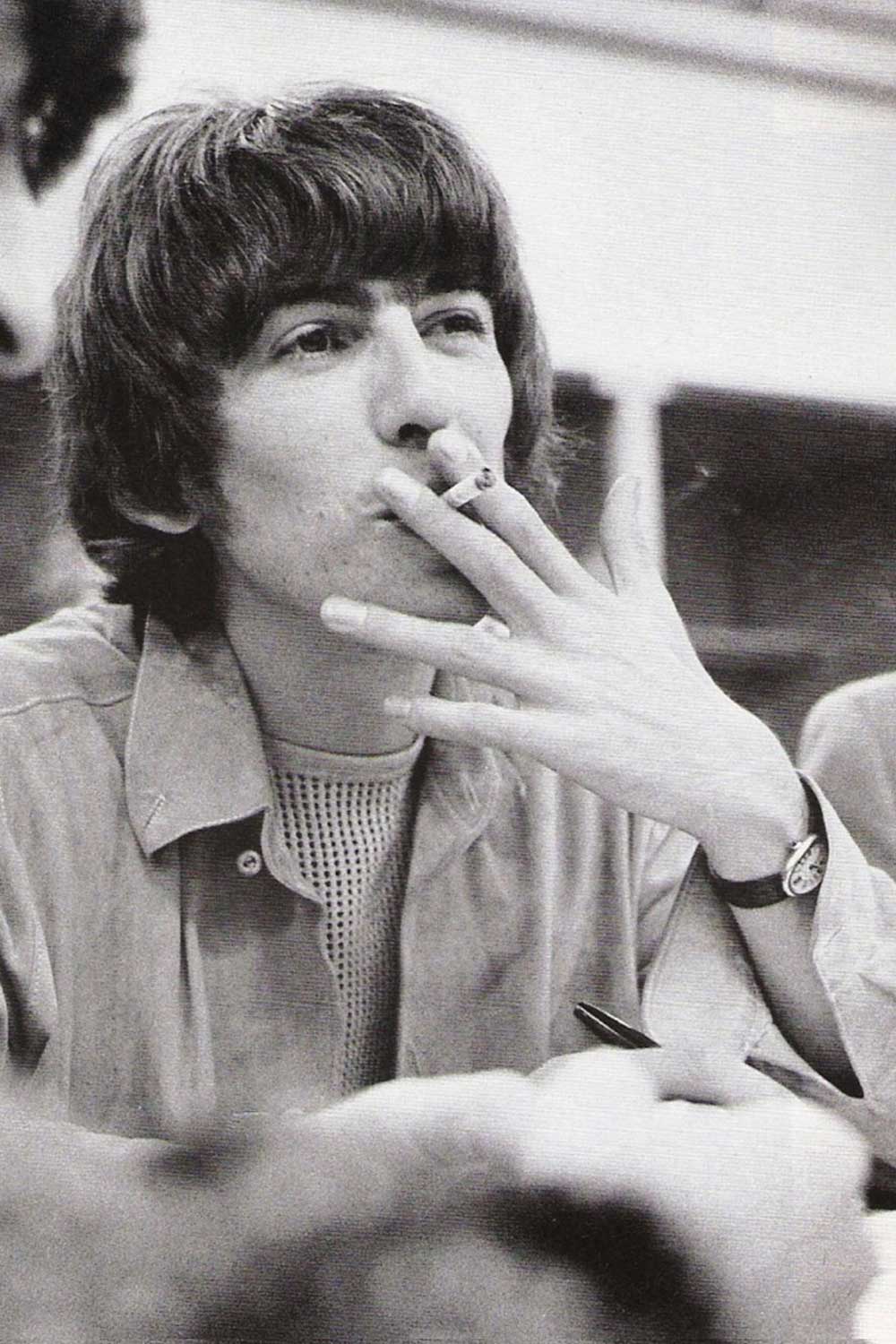
George Harrison of The Beatles relaxing with a Cartier Baignoire on his wrist. (image: Oracle of Time)
Cartier London — The Backstory
In order to understand the Crash, you have to understand a little bit about the Cartier family history. The fabled maison was created in 1847 by Louis-François Cartier, after he took over the workshop from his mentor, Adolphe Picard. Louis-François handed the business to his son, Alfred in 1874. Alfred, in turn, had three sons, and by 1899, eldest son Louis was involved in the business and they moved to 13 rue de la Paix, the flagship store in Paris’ exclusive shopping district that still stands today. The Cartiers had, by that point, already experienced incredible success in France, having received patronage from the French aristocracy for decades. In an inspired move to internationalize the brand and one that was reminiscent of a Grimm Brothers fable, Alfred sent his two younger sons to create new Cartier “temples” in foreign cities. Middle child Pierre went to New York. There, he established Cartier USA at 712 Fifth Avenue in 1909 and then shifted into the famous Cartier mansion at 653 Fifth Avenue in 1917. He famously bought this stunning edifice from its owner, railway tycoon Morton F. Plant, for a $100 in cash and a double string of pearls, valued at a million dollars at the time, that Plant’s wife Maisie fancied. His brother Jacques ventured to London, setting up his “temple” in 1902, the same year of King Edward VII’s coronation. He later moved in 1909, to 175-177 Bond Street where the current Cartier London flagship still stands. Louis, Alfred’s eldest son stayed in Paris at the Rue de la Paix flagship established by his father and, in 1904, created the world’s first wristwatch for his friend, the Franco-Brazilian aviator dandy Alberto Santos-Dumont, whose passion was to fly his dirigibles over the rooftops of Paris.
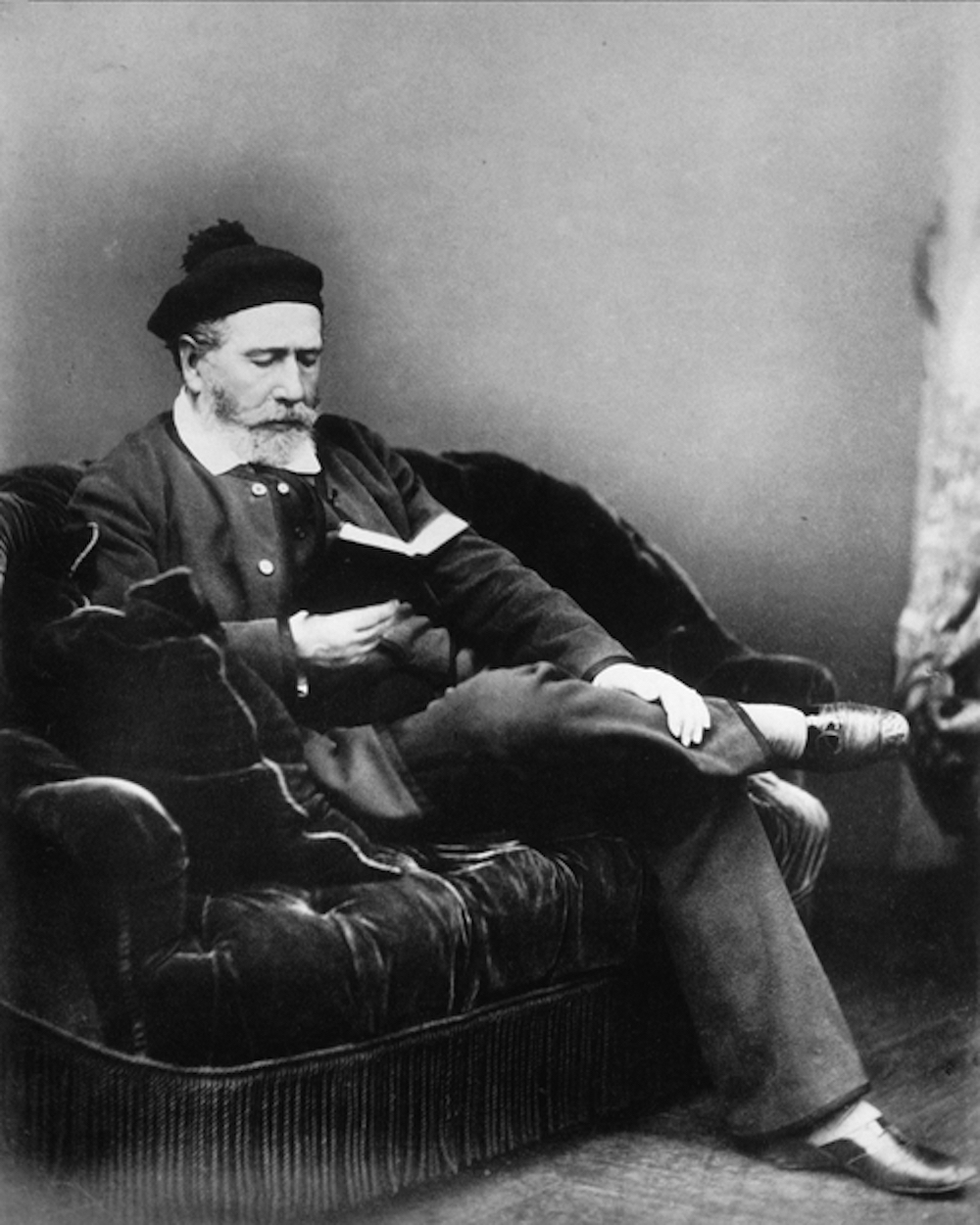
Cartier family patriarch, Louis-François Cartier. (image: Fondation de la Haute Horlogerie)
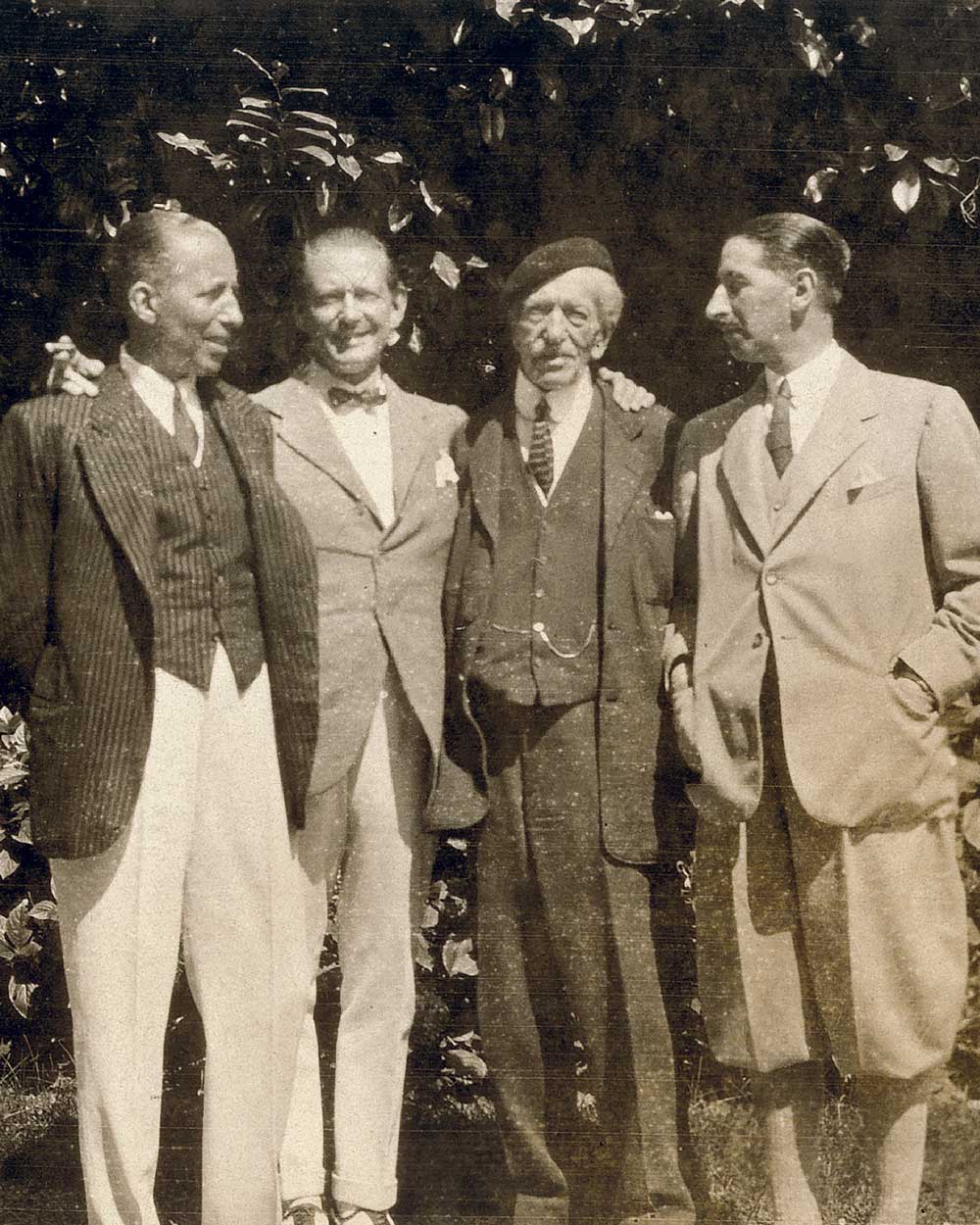
Alfred Cartier and his three sons in 1922. From left: Pierre, Louis, Alfred and Jacques. (image: Cartier)
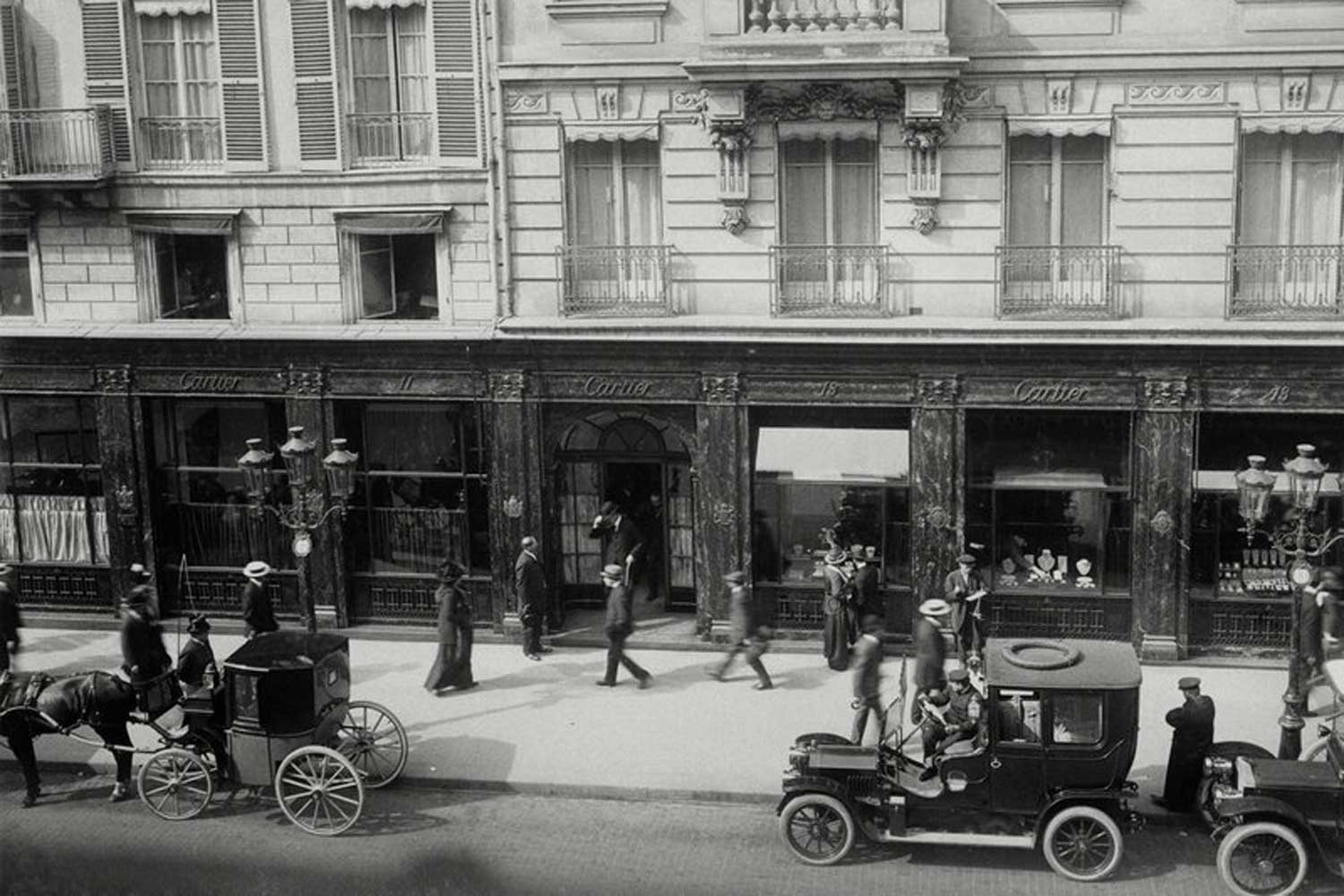
Cartier Paris flagship at 13 rue de la Paix in 1915, 16 years after Alfred and eldest son Louis moved their store to the upscale shopping district in Paris. (image: Cartier)
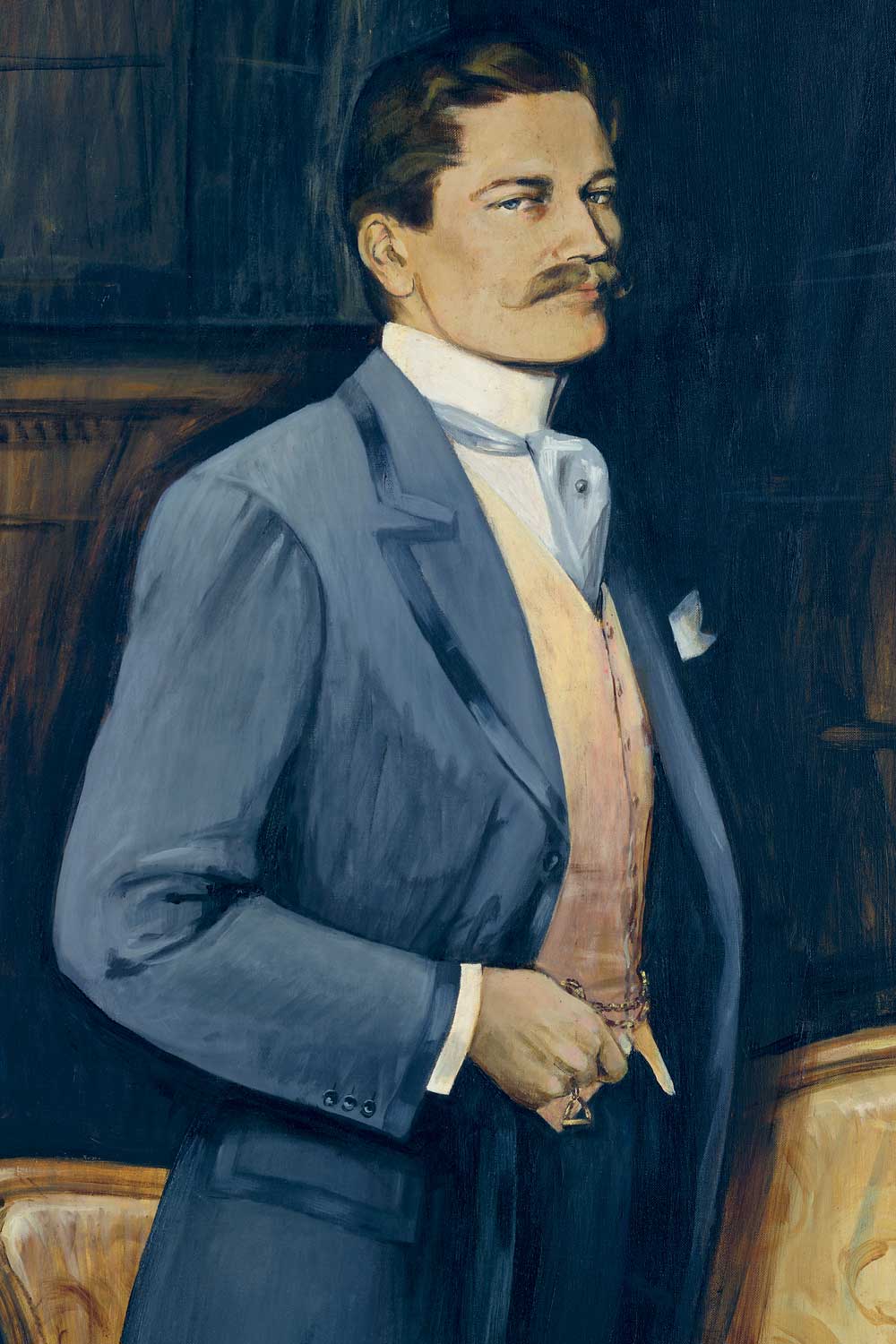
Louis Cartier, the eldest of Alfred's three sons, was quite a dandy himself and we can see why he and Alberto Santos-Dumont became fast friends. (image: Cartier)
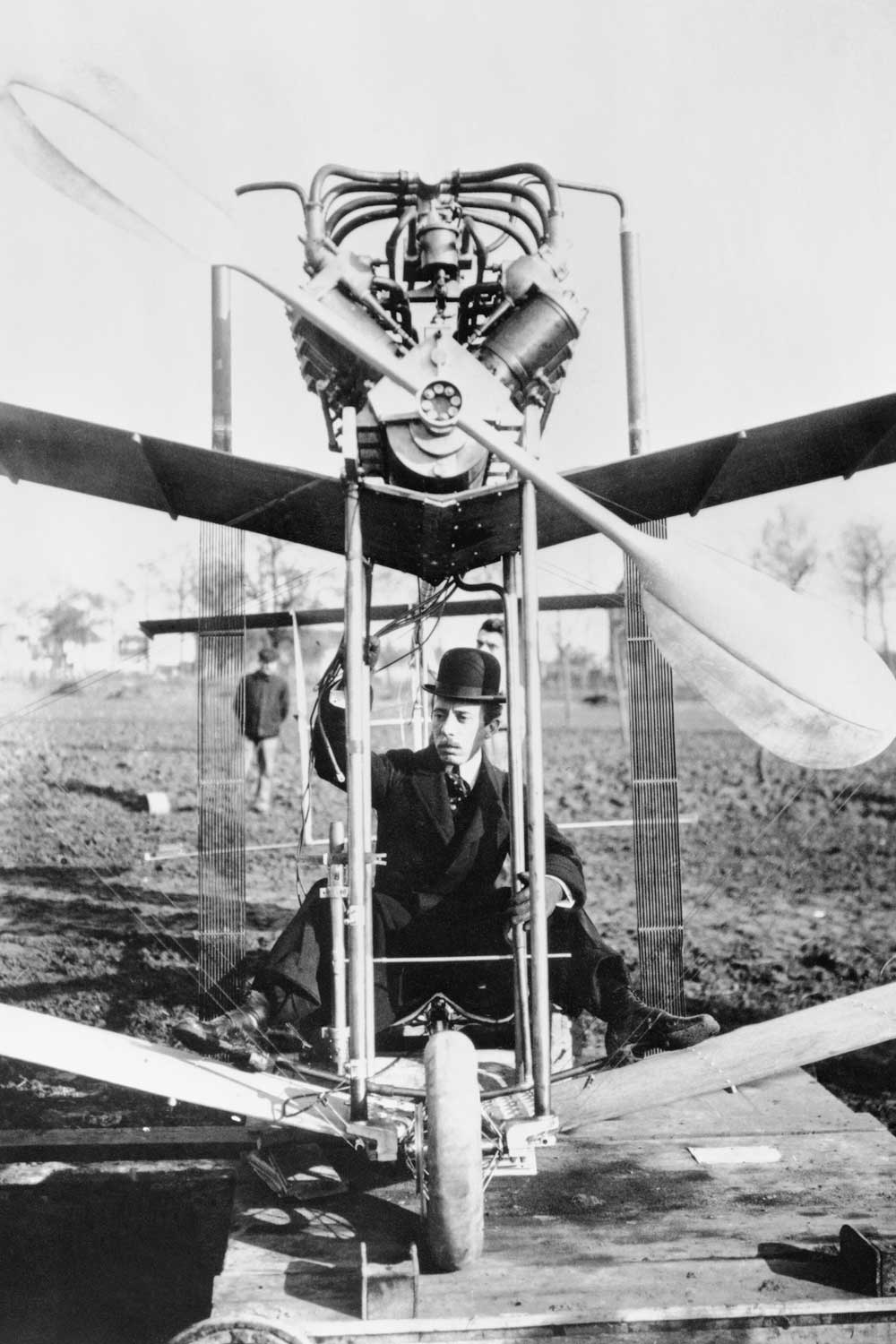
Alberto Santos-Dumont was one of the pioneers during the early years of aviation in the 1900s. He famously released to the public, the blueprints of his monoplane, La Demoiselle, so that anyone would be able to build one for themselves. (image: Cartier)
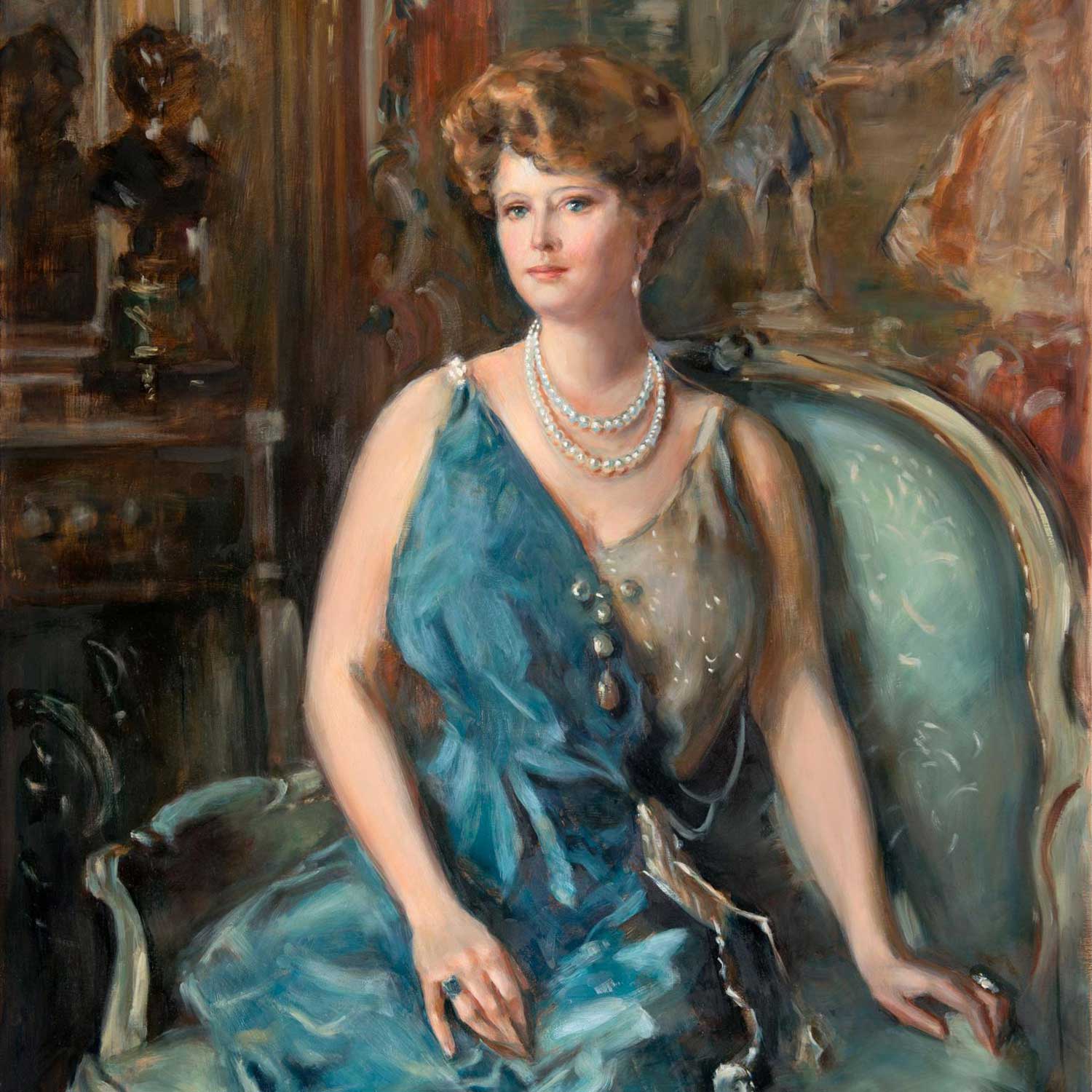
A painting of Mae "Maisie" Plant, wife of railway tycoon Morton F. Plant, seen here with her pearls and dressed in her finery. (image: Cartier)
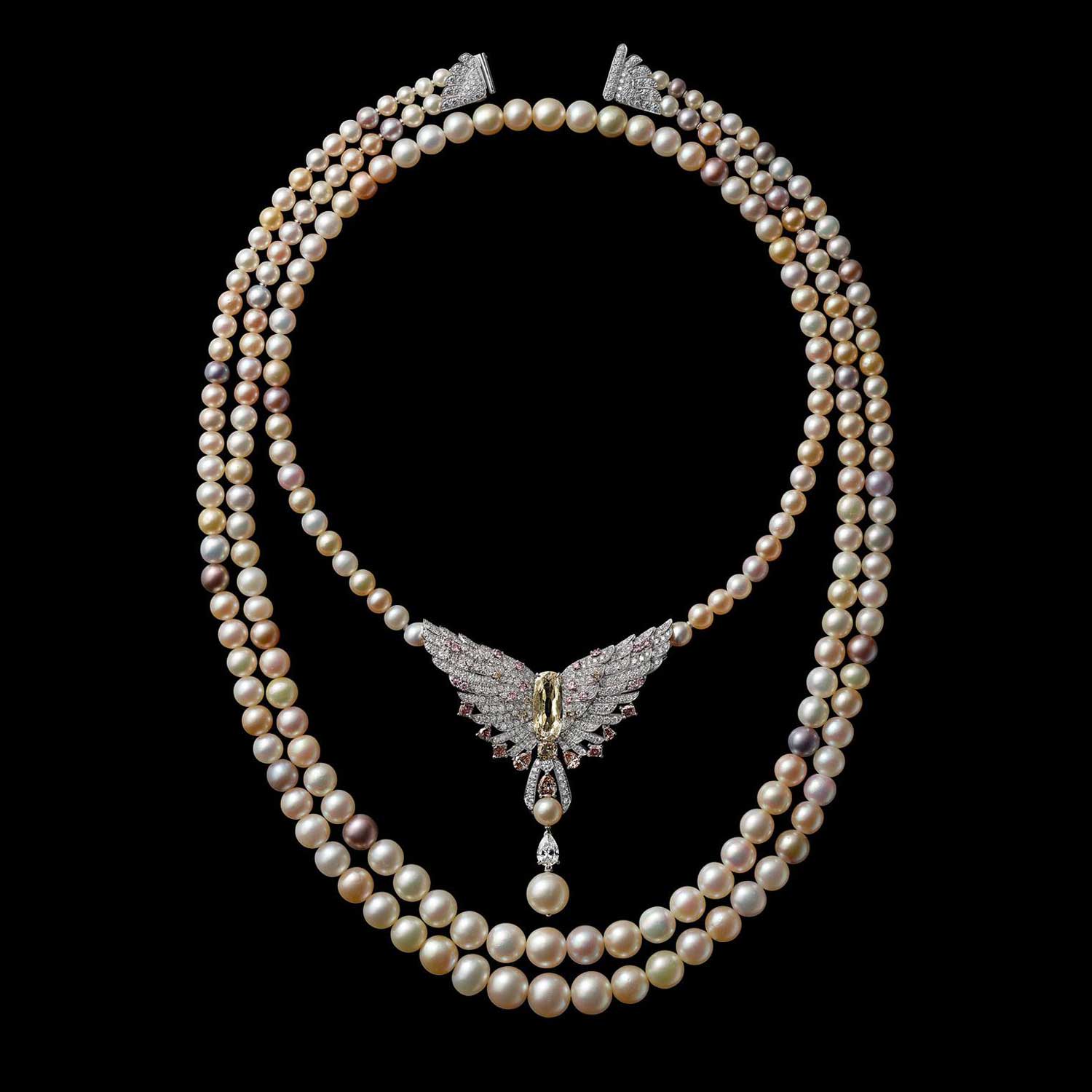
The pearl necklace that Maisie Plant had become so enamoured with, that her husband Morton F. Plant was willing to trade his mansion at 653 Fifth Ave for it, during a dinner both of them were having with Pierre Cartier one evening. The necklace was valued at $1,000,000 at the time while the mansion a much lower $925,000. (image: Cartier)
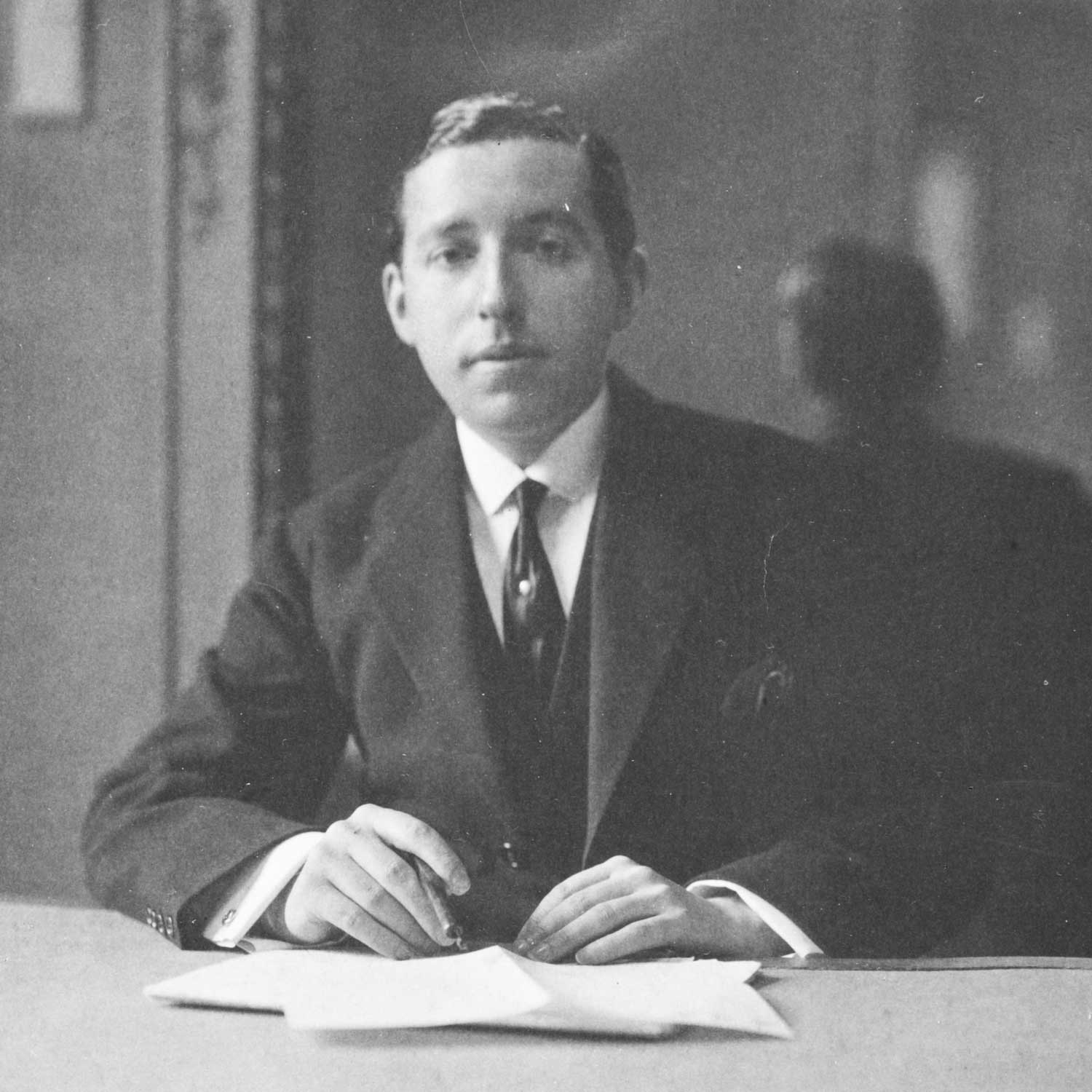
A young Pierre Cartier in New York. (image: Cartier)
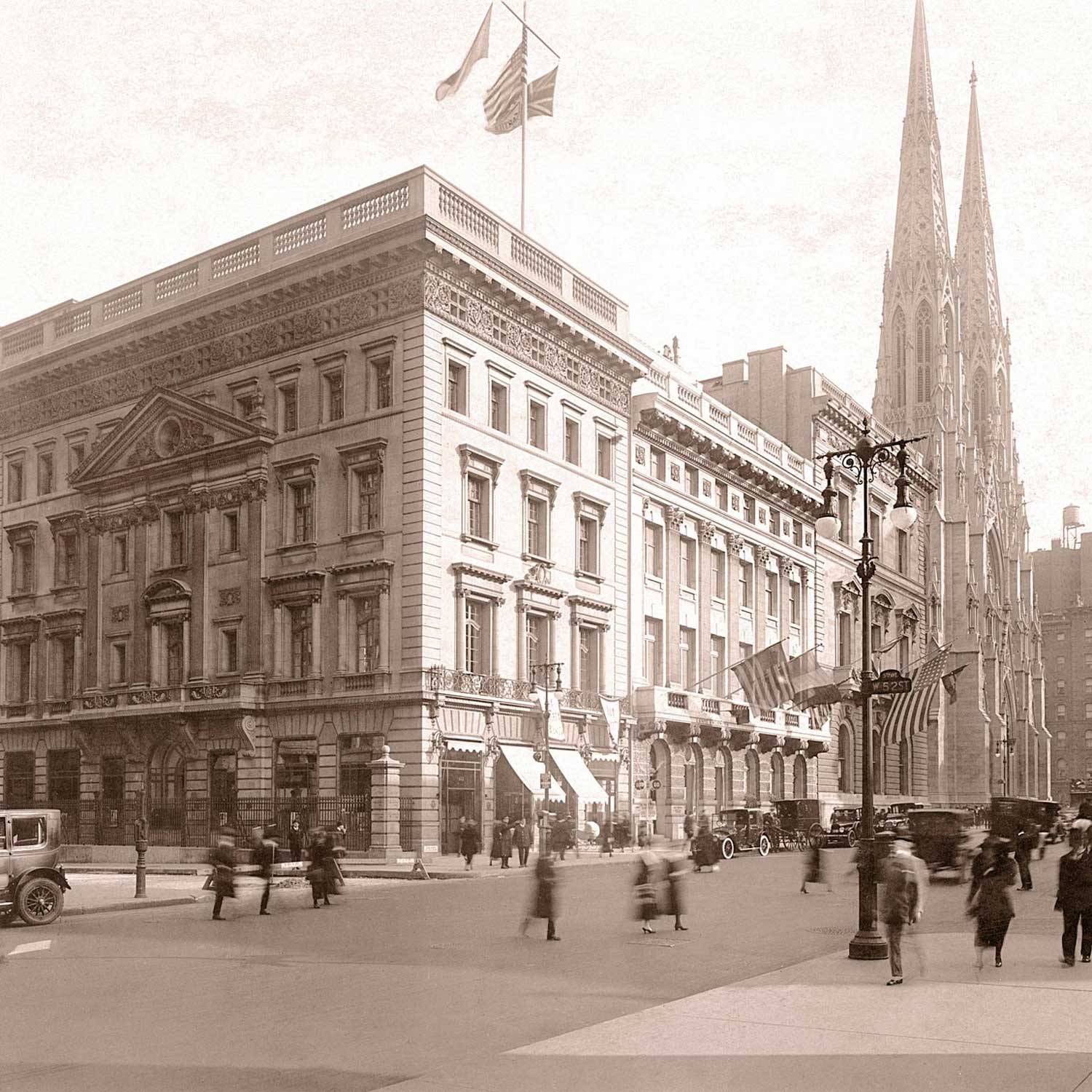
Cartier New York flagship at 653 Fifth Ave in 1918, one year after Pierre Cartier managed to broker one of the most fabled deals of all time. (image: Cartier)
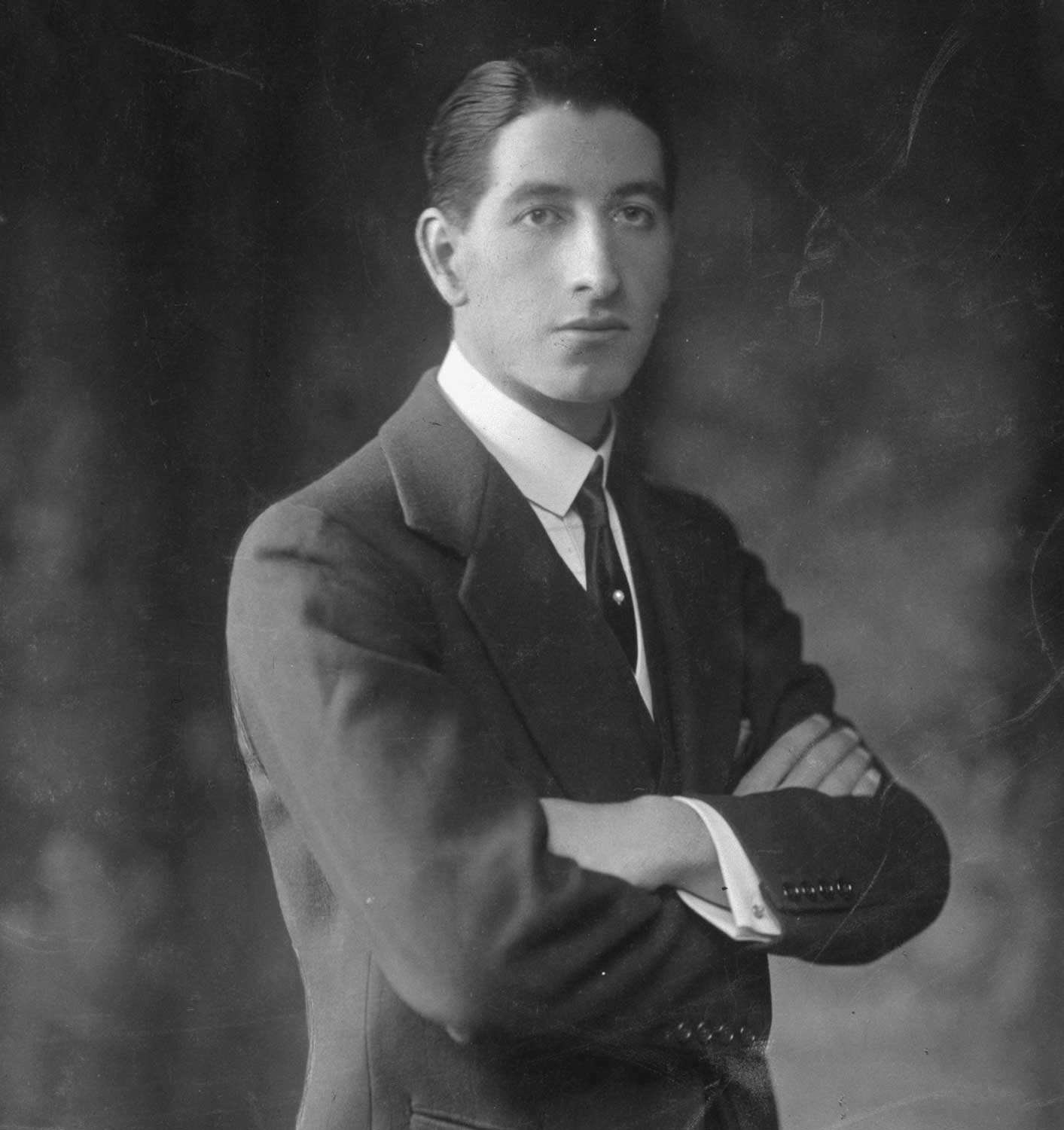
The youngest son of Alfred Cartier, Jacques would also prove to be highly successful in London. He would make trips to India and the Middle East in search of the most beautiful gems for Cartier London's jewelry creations. (image: Cartier)
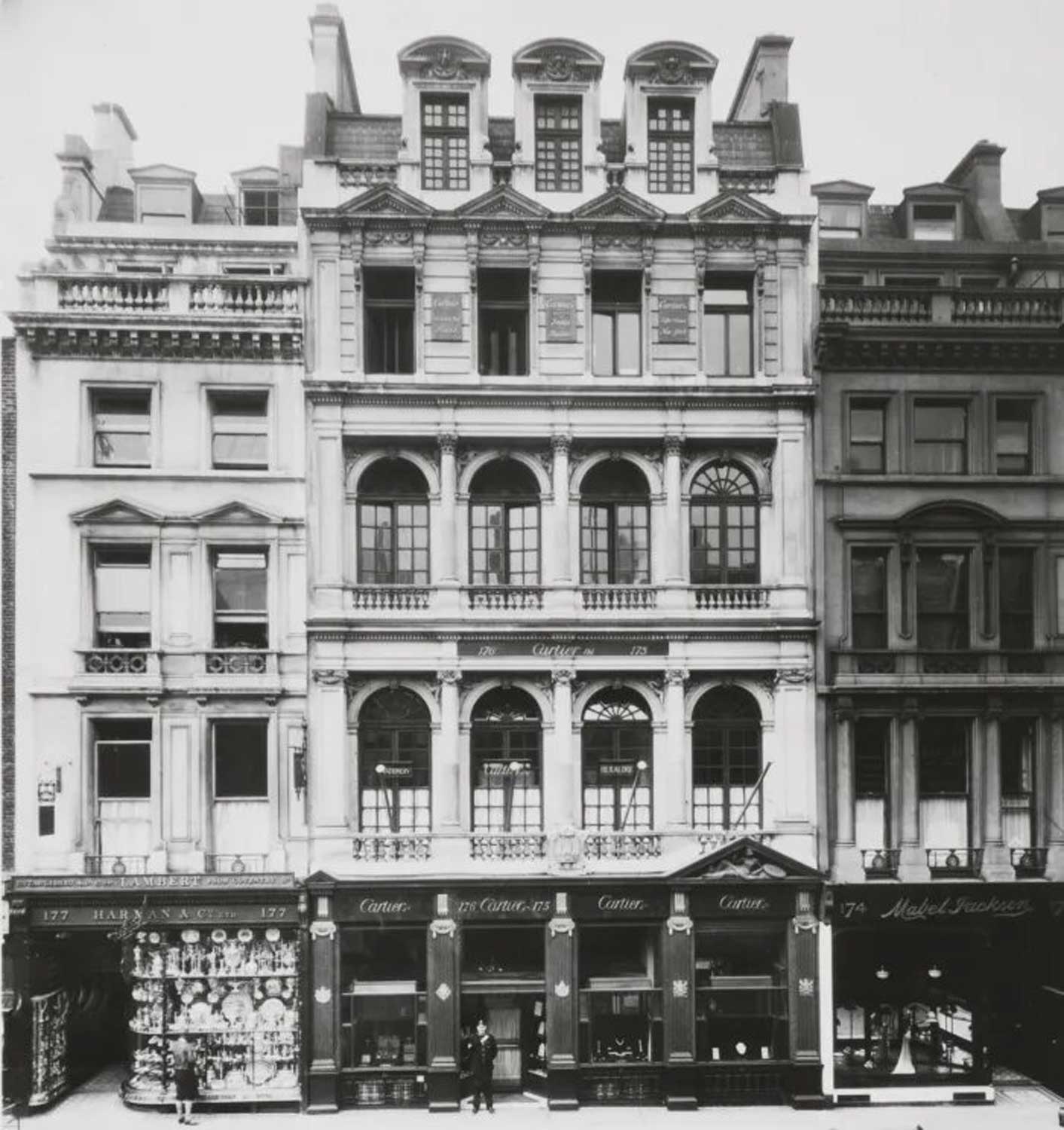
Cartier London flagship at 175-176 Bond Street in the early 1900s before it acquired No. 177 on its left. (image: Cartier)
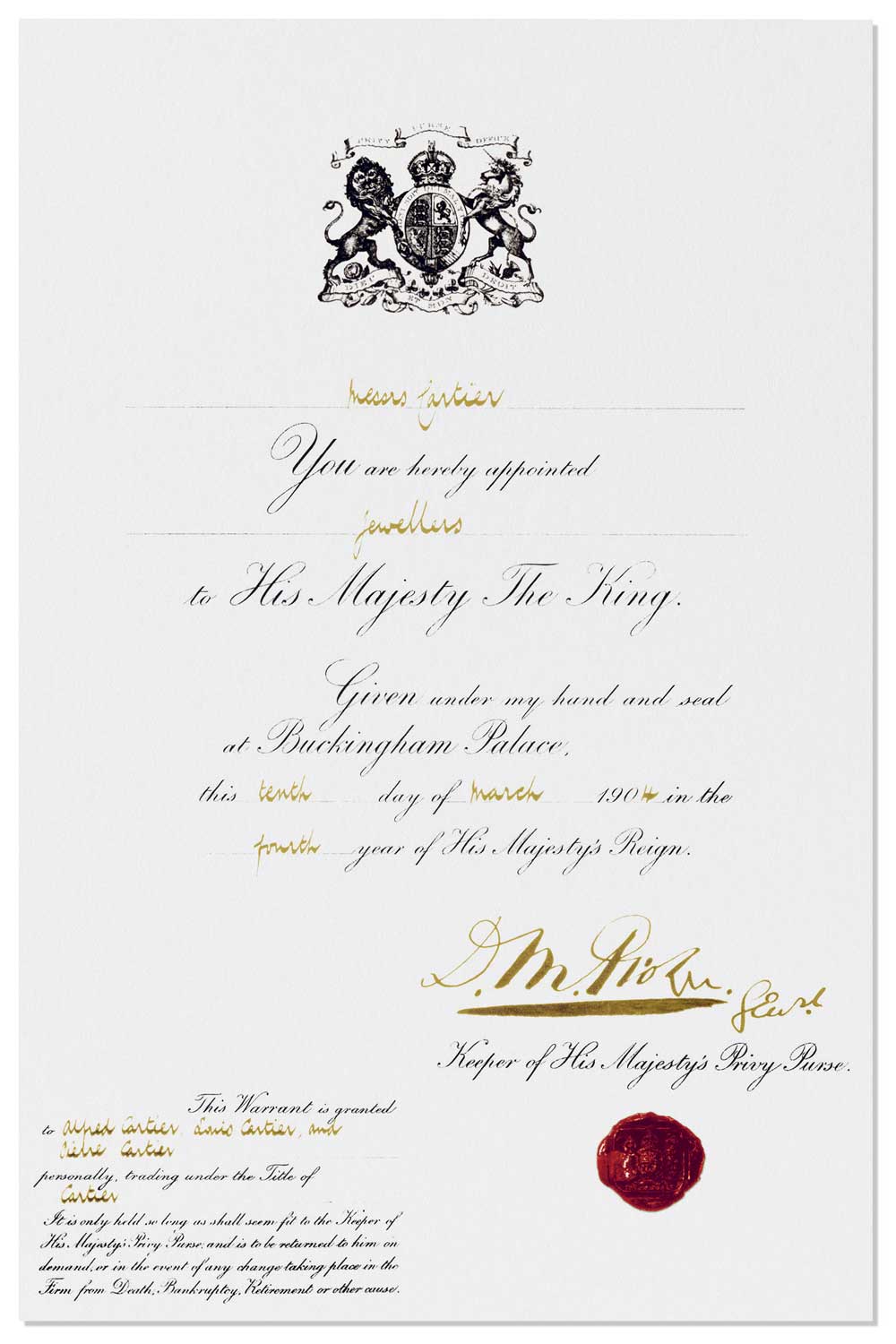
Just two years after setting up shop in London, Cartier would receive a Royal Warrant from King Edward VII on March 10th, 1904. King Edward would famously call Cartier the "jeweller of kings and the king of jewellers". (image: Cartier)
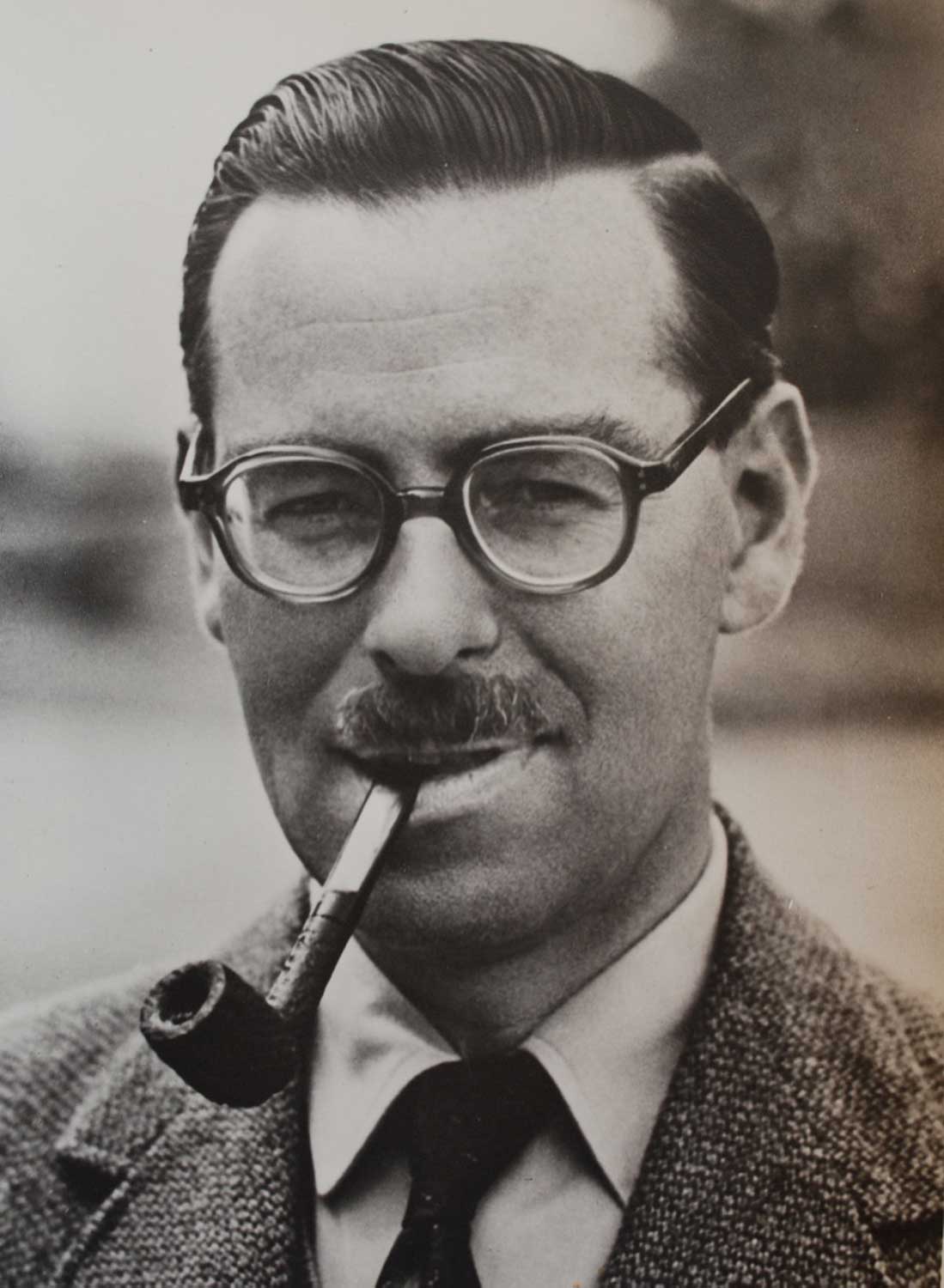
Jean-Jacques Cartier, a visionary in his own right, would continue the success of his father, Jacques, by creating some of the most iconic watch designs in Cartier's history. (image: Francesca Cartier Brickell)
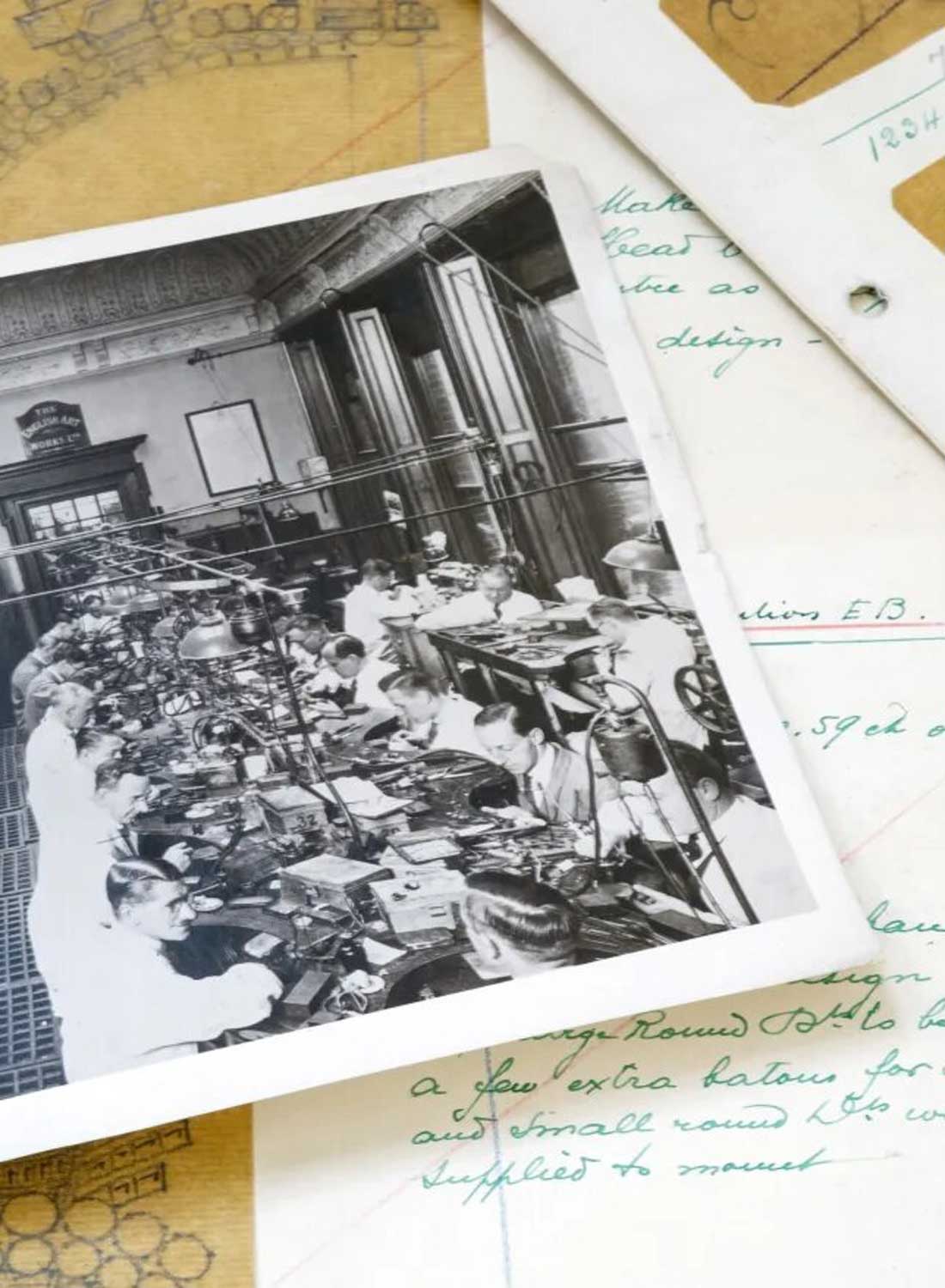
The English Artworks workshop seen here in 1930 was the engine that produced watch and jewelry works of art for Cartier London. (image: Cartier)
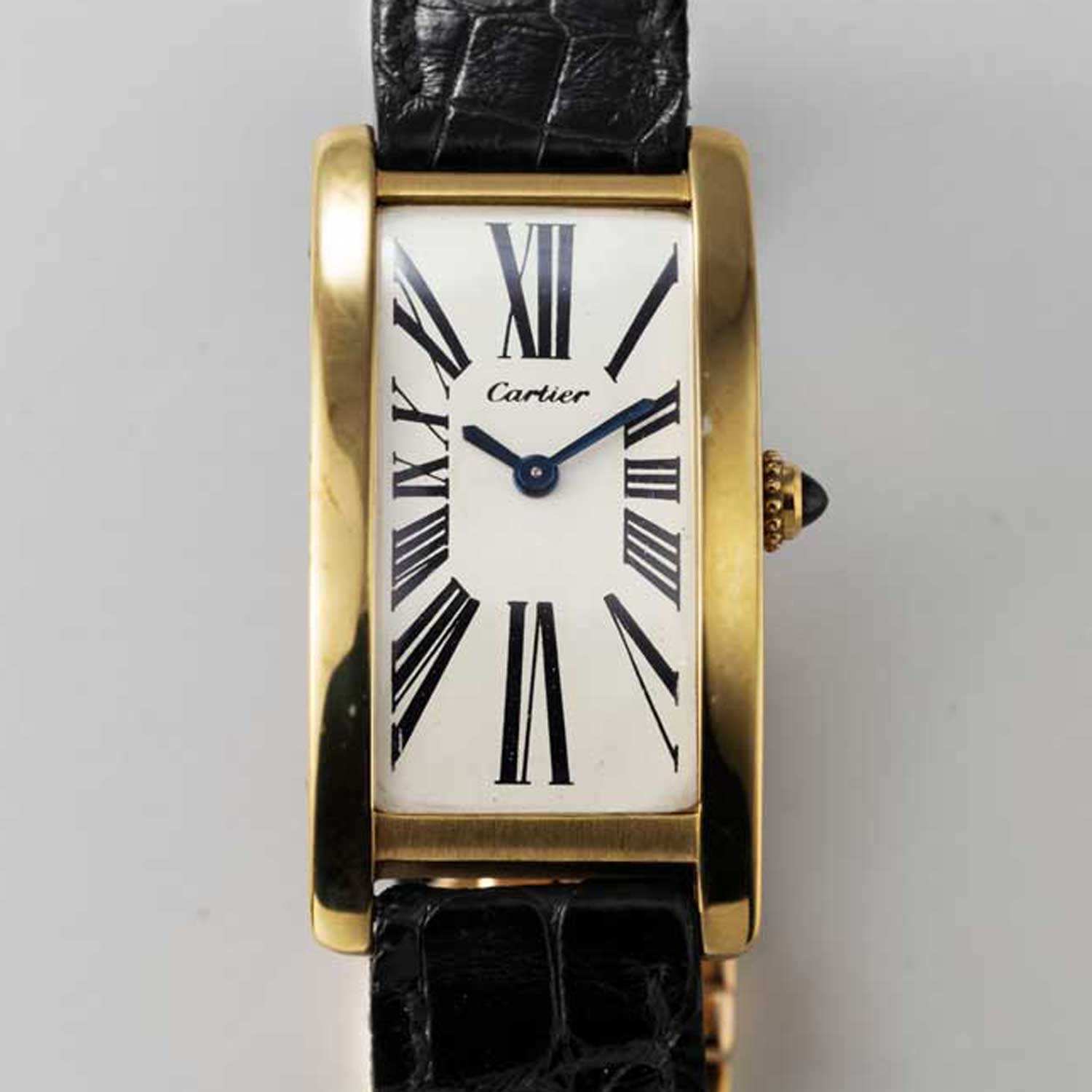
Jean-Jacques' creative bent was expressed by adapting his uncle Louis' classic designs. This Cartier London Tank Cintrée from 1969 had elongated roman numerals and lost the railroad minute track of the original Tank Cintrée from Cartier Paris. (image: Auro Montanari)
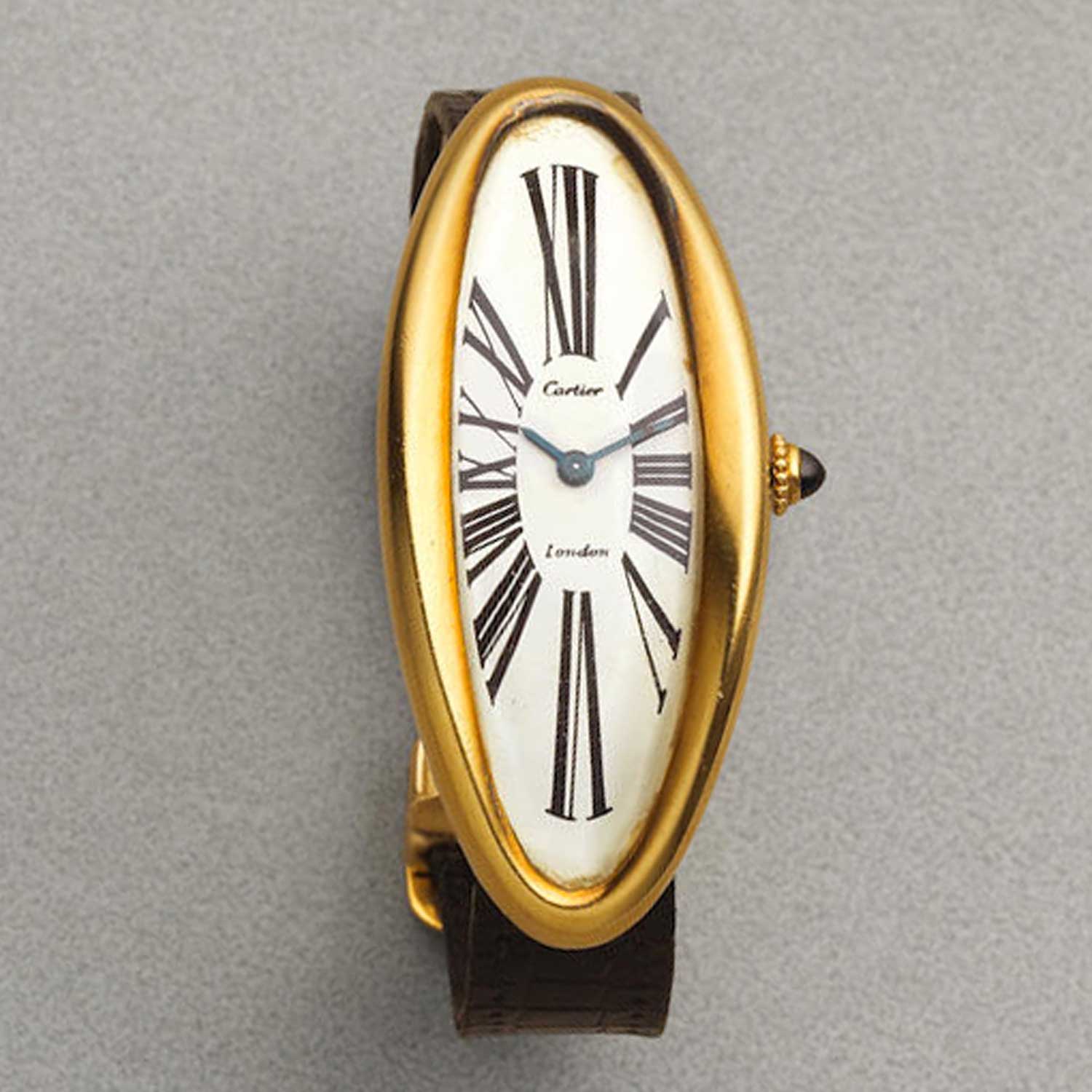
Jean-Jacques would take the original Baignoire and elongate it as well to become the Baignoire Allongée in 1958. It is arguable that the Allongée is even more elegant that the original design it is based on. This example dates from 1969. (image: Bonhams)
The Creativity of Jean-Jacques Cartier
Says Shary Rahman, who was so enamored with the designs created by Jean-Jacques Cartier as to have his special order Tank Cintrée feature a London-style dial in black with white indexes, “You can really feel that Cartier is responding to the rise of Pop Art and other cultural changes. If you think about it, in 1967, Andy Warhol was creating his silk screens of Marilyn Monroe, a Pop version of an iconic star. To me, Jean-Jacques was similar in creating a Pop version of his uncle Louis’ dials. The Cartier London dials, even by today’s standards, feel so wonderfully modern. That is the magic of their design.”
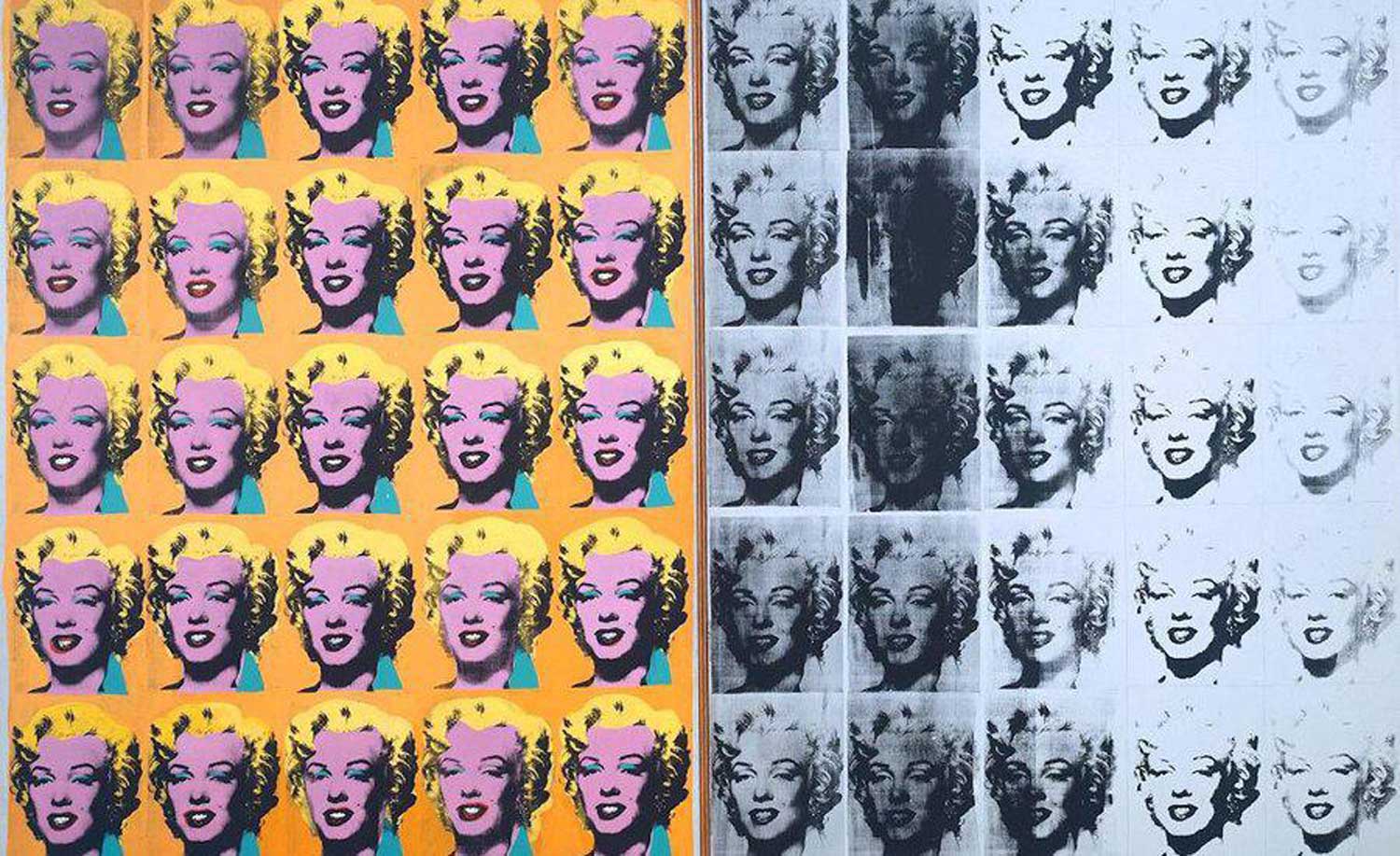
Marilyn Diptych by pop art legend Andy Warhol. The silkscreen painting was completed just a few weeks after Marilyn Monroe's death in August 1962. (image: Artspace)
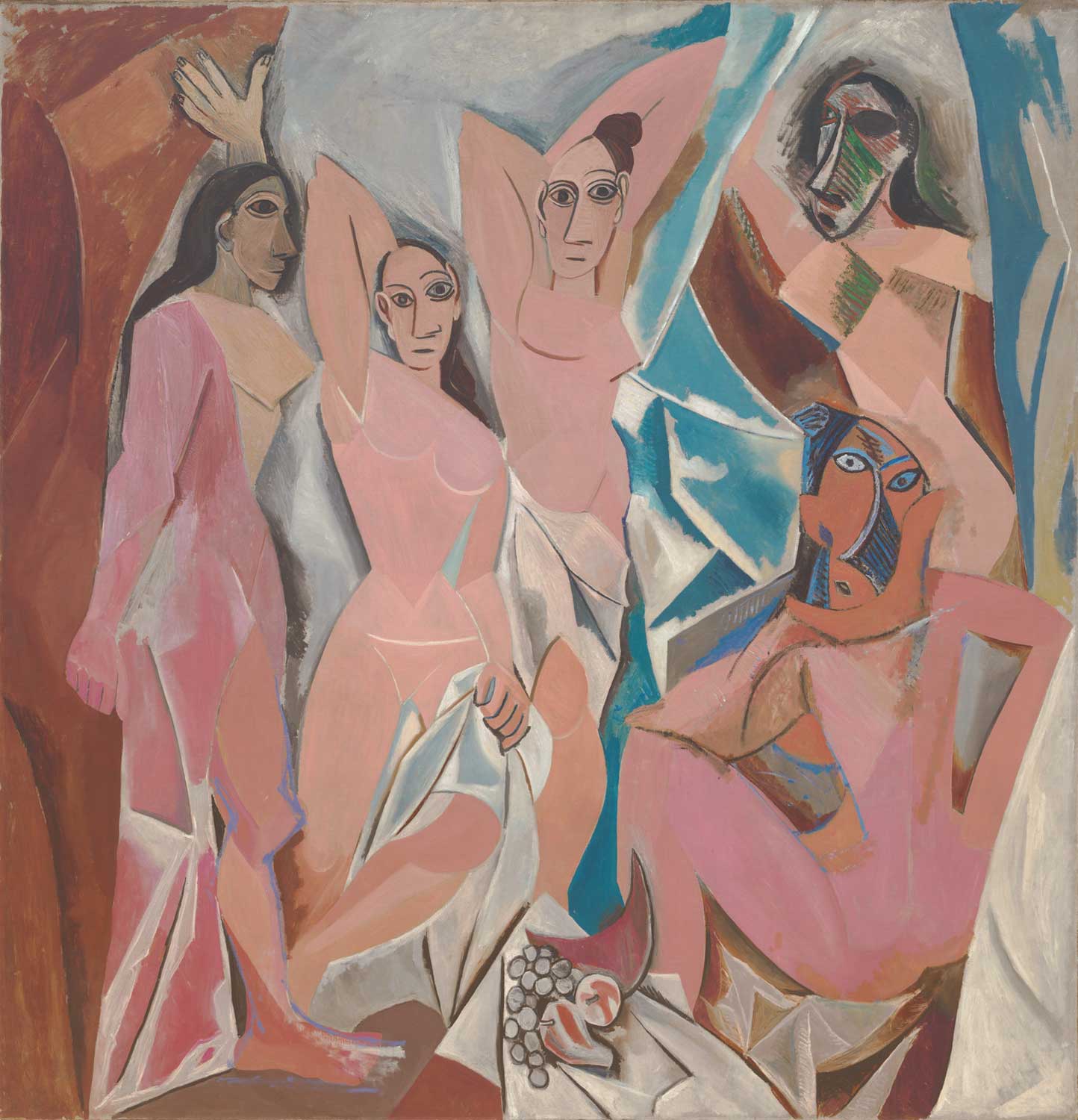
Les Demoiselles d’Avignon, 1907 by cubist master Pablo Picasso was radical in its perspective and composition. Since Avignon is a street in Barcelona famous for its brothels, many suspect the five ladies in the painting to be depictions of ladies of the night. (image MoMA)
The second theory is that the Crash was inspired by the Salvador Dali surrealist masterpiece from 1931, The Persistence of Memory. In this tableau, we see a Freudian dreamscape with clocks seeming to melt and drape over themselves into contorted shapes. Looking at the clock that appears on the far left, one cannot help but appreciate how closely it resembles the shape of the Crash watch. Indeed, if you were simply to flip the clock 180 degrees from left to right, it would be almost identical in shape to the Crash.
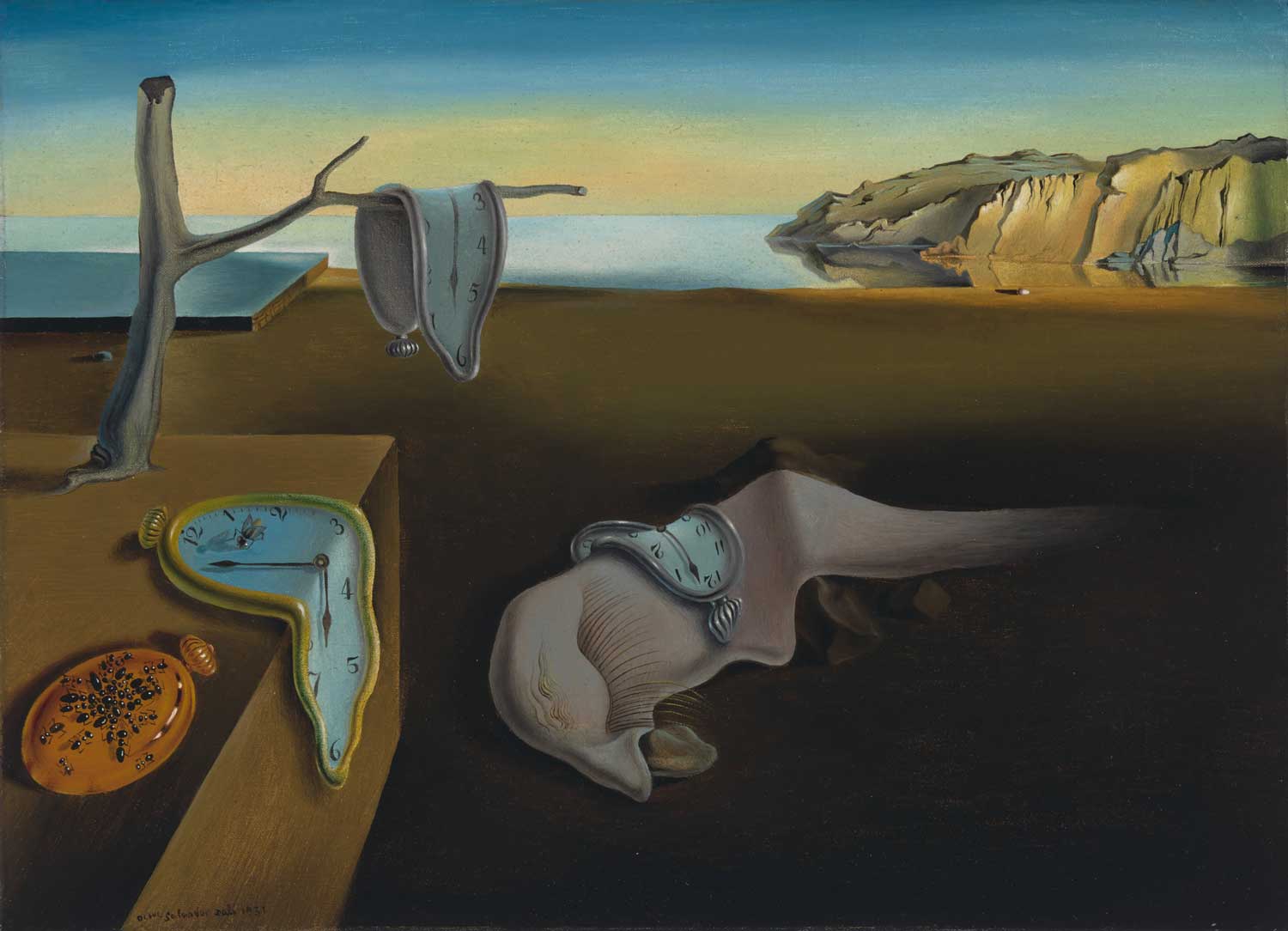
The Persistence of Memory, 1931 by Salvador Dalí, is one of the most recognizable works of Surrealism. When asked if he was inspired by Einstein's theory of relativity, Dalí replied that it was a surrealist's perception of Camembert cheese melting in the sun. Could this be the inspiration for the Cartier Crash? (image MoMA)
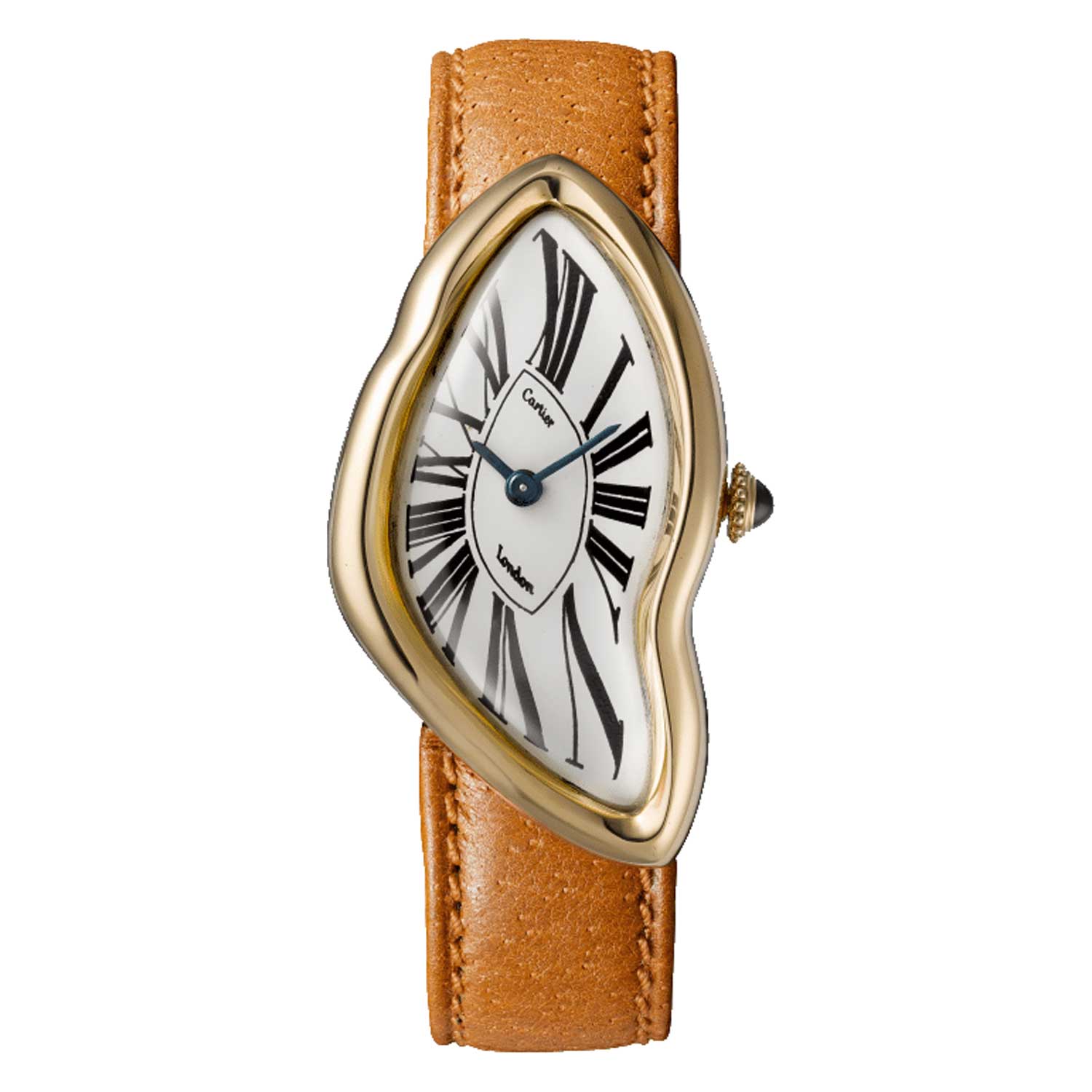
An original Cartier London Crash from 1967. The overall shape is remarkably similar to that of the Baignoire Allongée on the right. (image: Cartier)
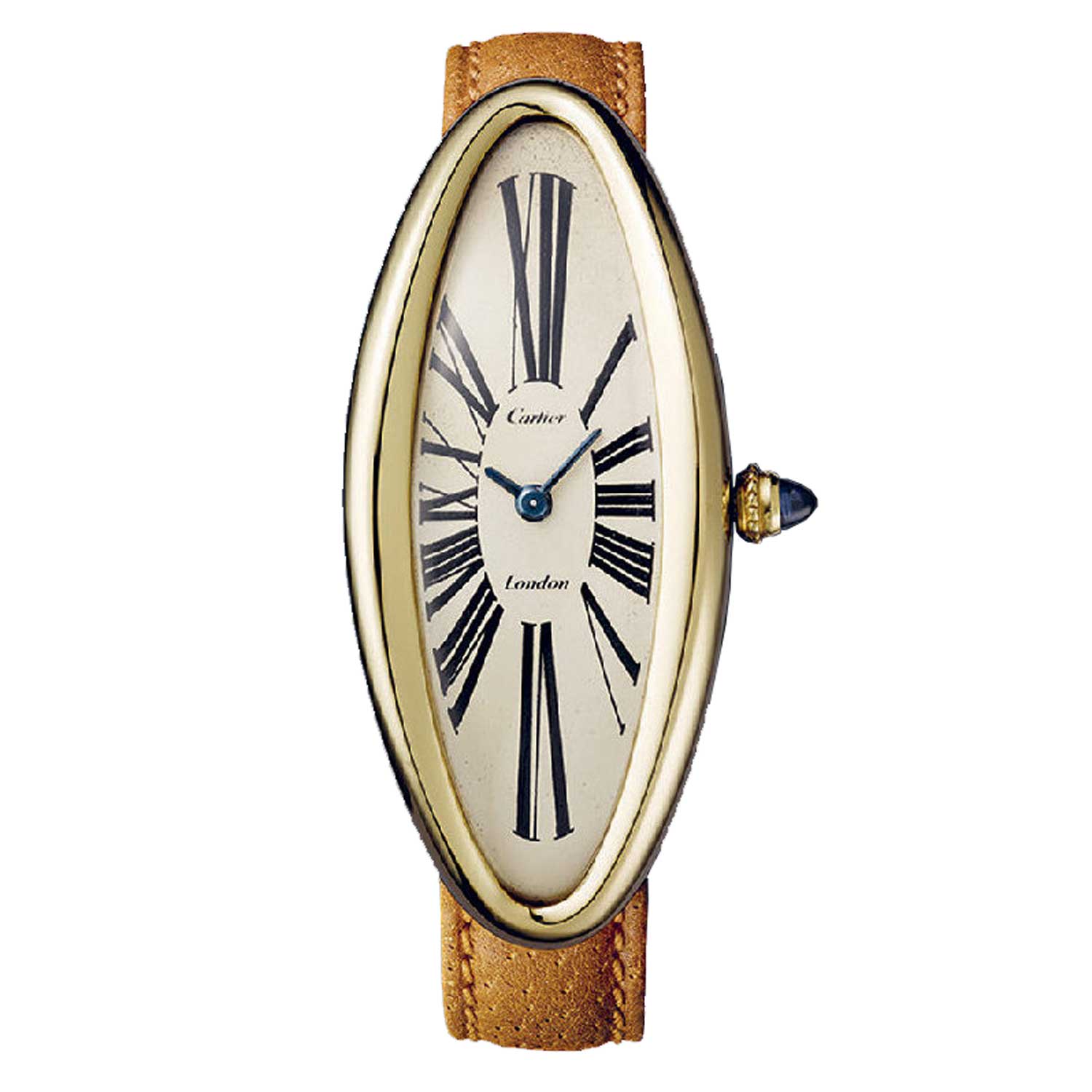
An original Cartier London Baignoire Allongée from 1957. Could this watch be the progenitor of the Crash all along? (image: Cartier)
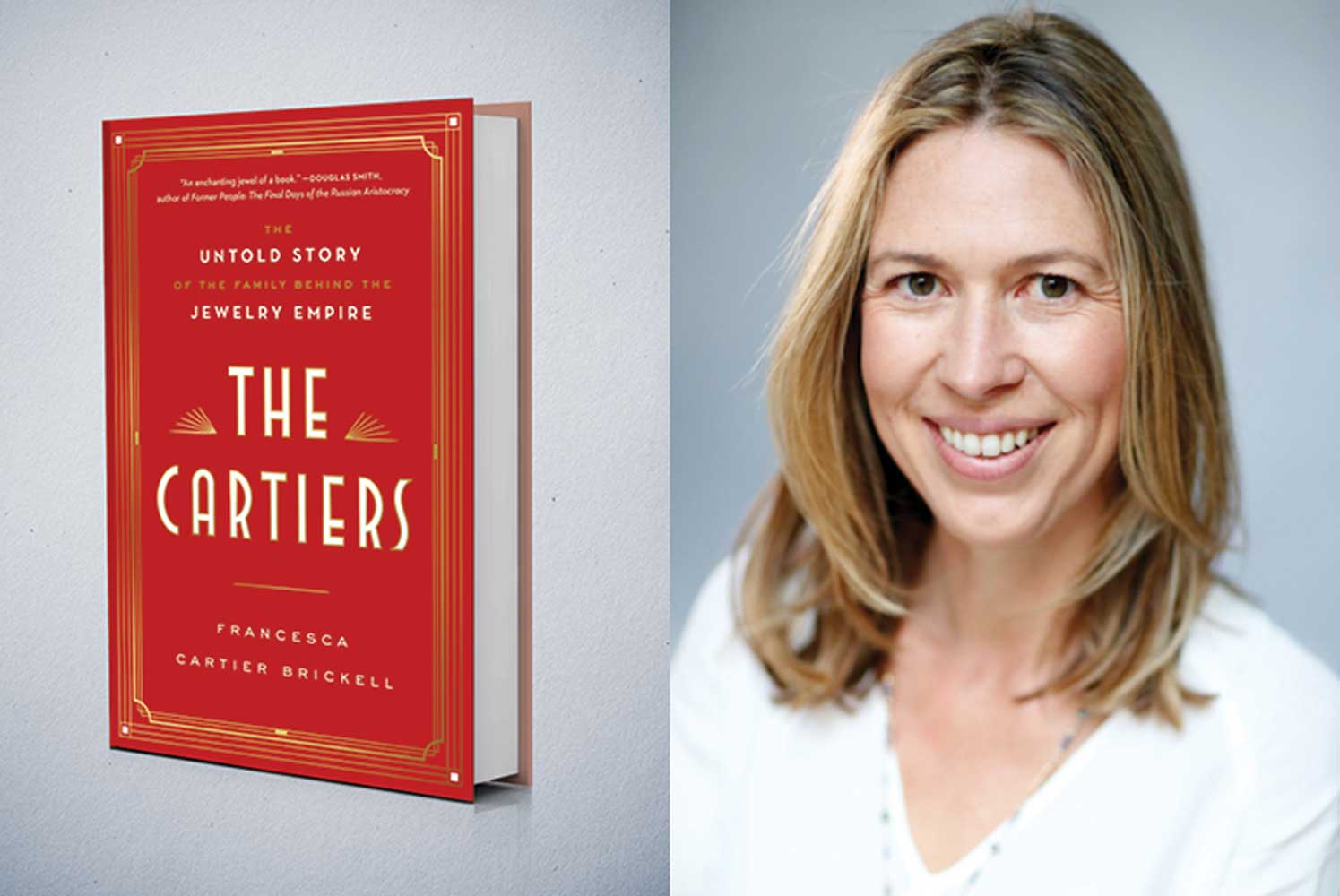
Francesca Cartier Brickell, granddaughter of Jean-Jacques Cartier tells the comprehensive story of her family in her book - The Cartiers: The Untold Story of the Family Behind the Jewelry Empire
Cartier Crash, 1967–Present Day
Original London Crashes from the initial series were made in relatively small numbers from 1967 to the 1970s. According to Sotheby’s, it is speculated that less than a dozen were made. Note that these Crashes are the largest classical Crashes made in that they are 43mm by 23mm. The watch was revived in 1991 by Cartier Paris in a limited edition of 400 watches in 38.5mm by 22.5mm yellow gold cases with the word “Paris” on the dial instead of London. It was extrapolated as a women’s diamond watch on a bracelet in 2013. Then, in 2015, it returned in grand form with a stunning skeletonized version. Here, the bridges of the movement designed by Carole Forestier replicated the form of the stylized Roman numerals. It was launched in a platinum edition of 67 pieces with a case size of 45.32mm by 28.15mm in 2015; then 67 rose gold pieces in the same size in 2016.
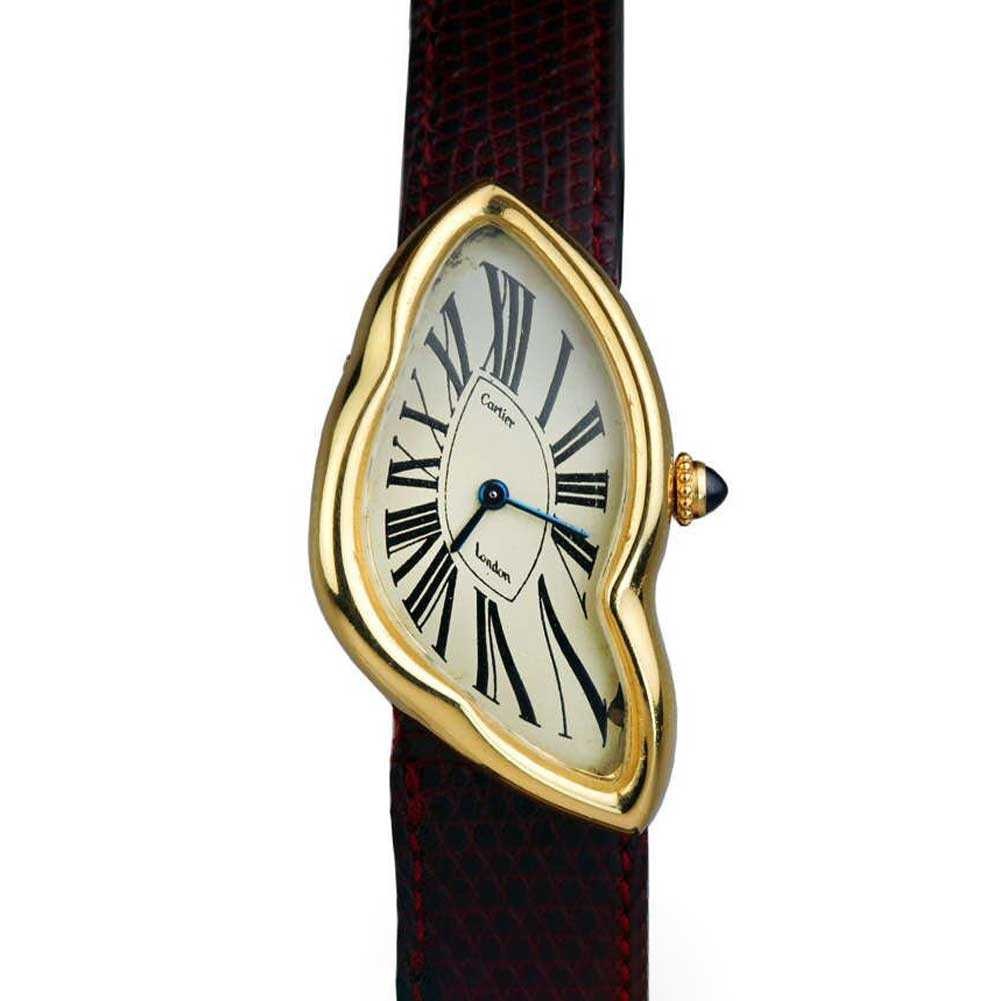
An original Cartier London Crash circa 1967
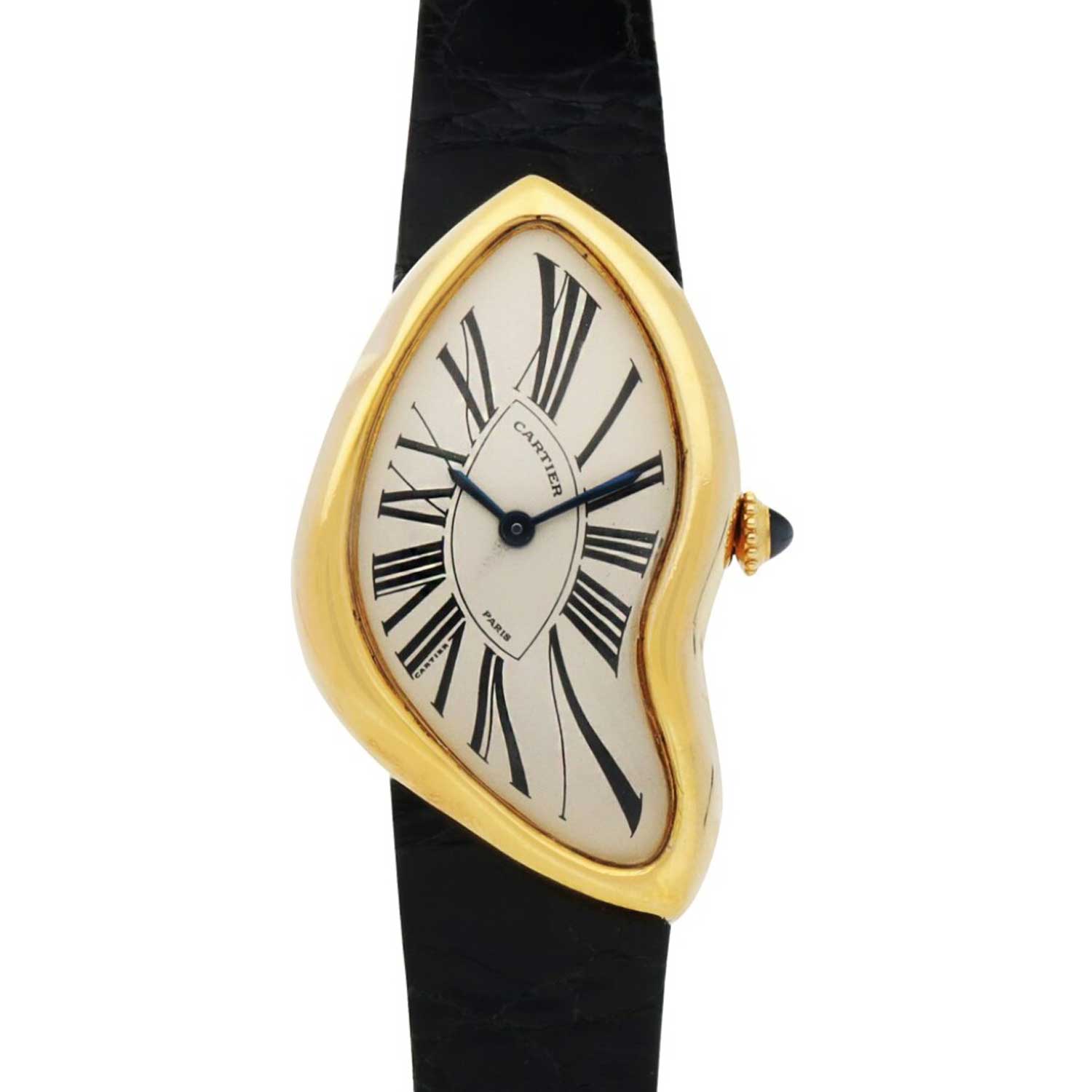
A Crash from the 400-piece 1991 limited edition that had 'Paris' on the dial instead of 'London' and only came in yellow gold. (image: Sotheby's)
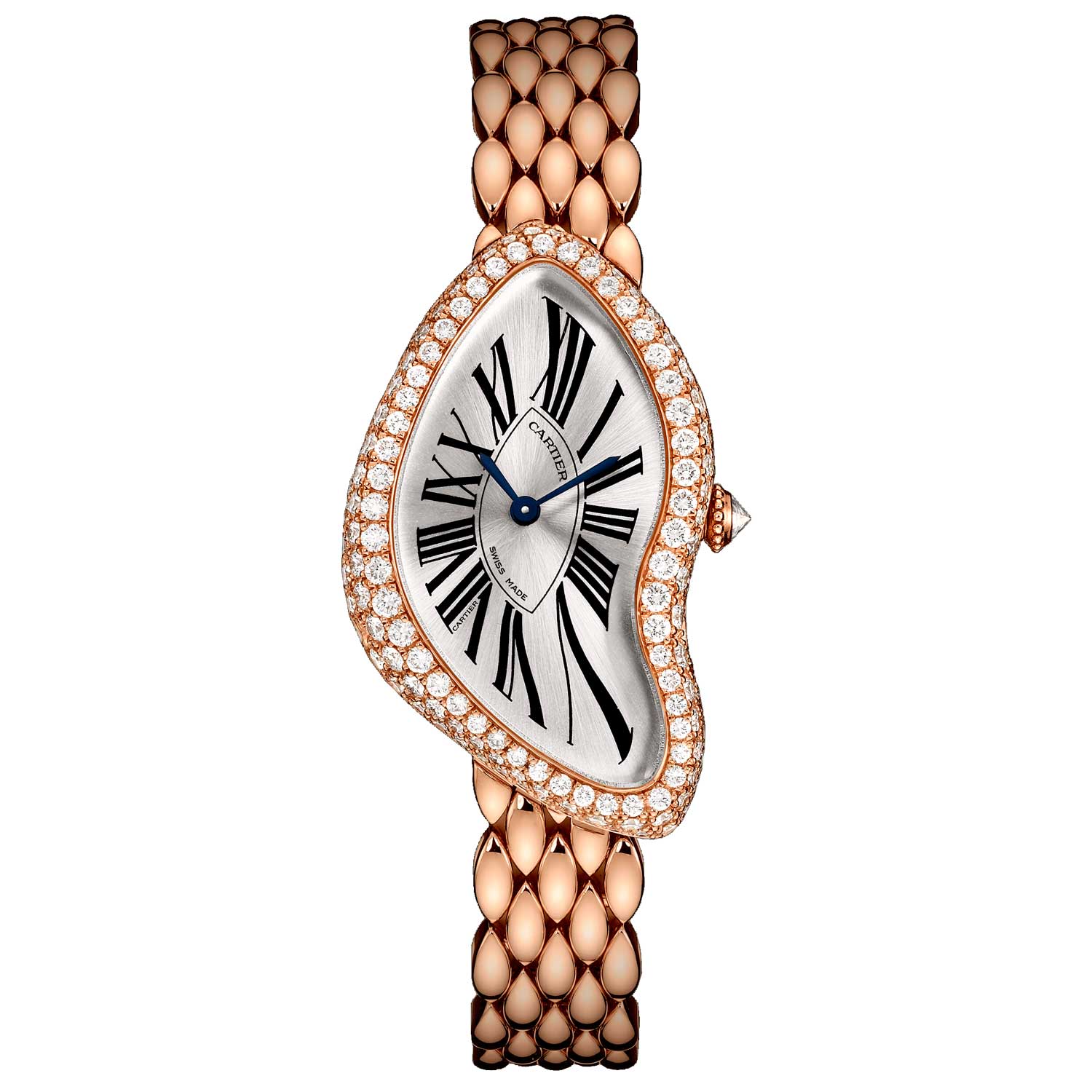
The Crash from 2013 was produced in two metals of 267 pieces each. This here had a diamond-set rose gold case with a teardrop-shaped bracelet also in rose gold. (image: Cartier)
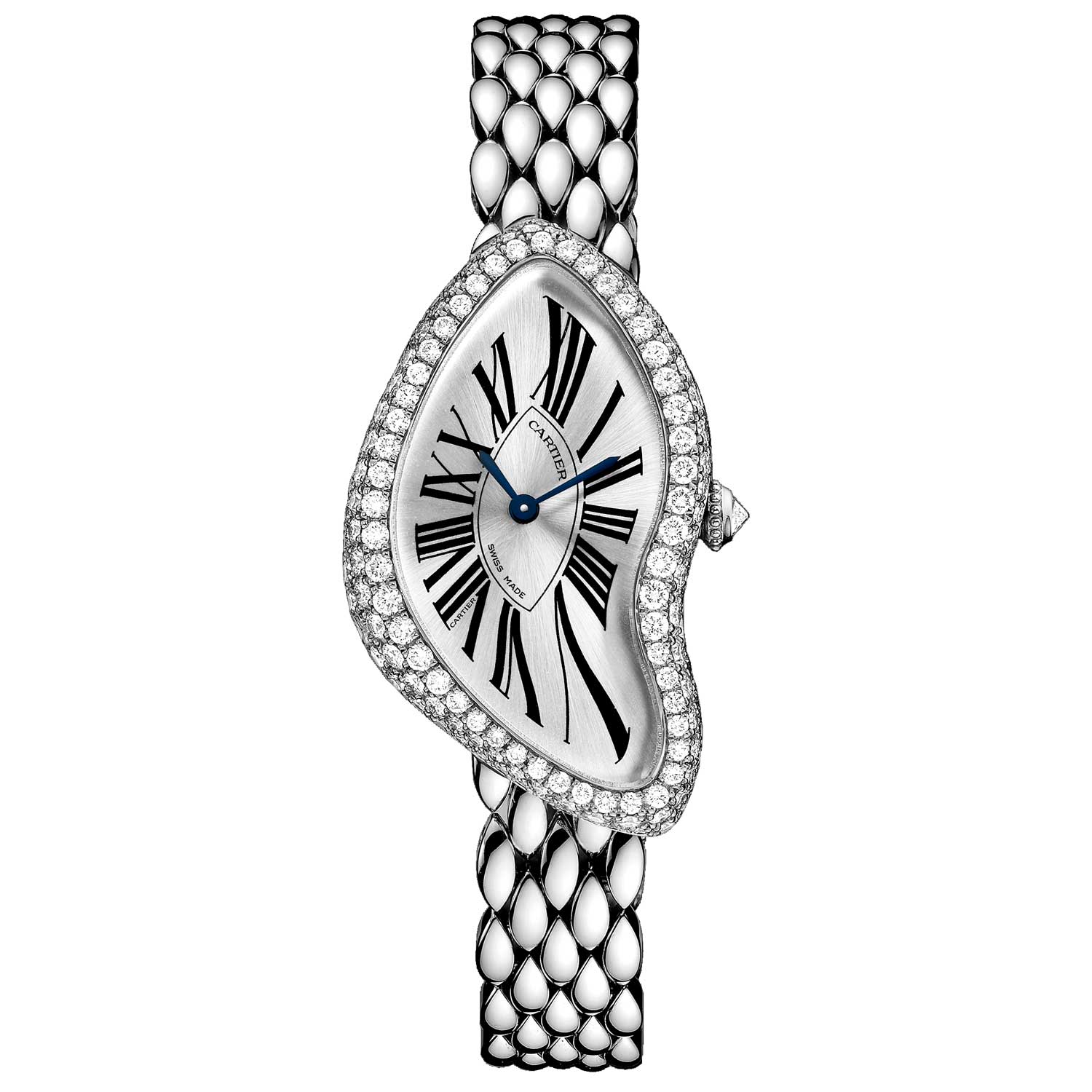
The 2013 Crash in white gold with diamond set case and white gold bracelet. Made in 267 pieces. (image: Cartier)
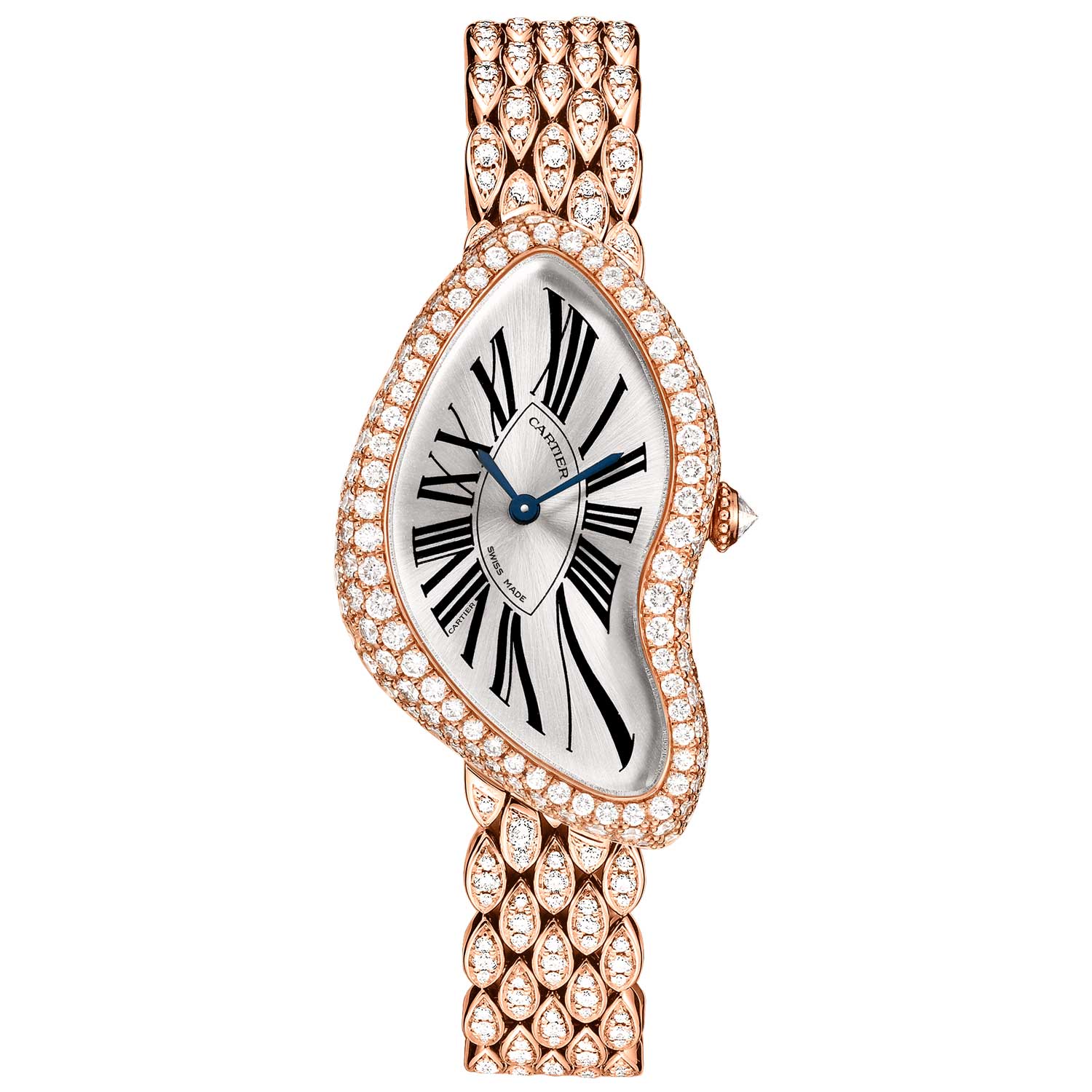
The 2013 release also saw two limited editions of 67 pieces each, fully paved with diamonds on the case and bracelet. The rose gold version is pictured here. (image: Cartier)
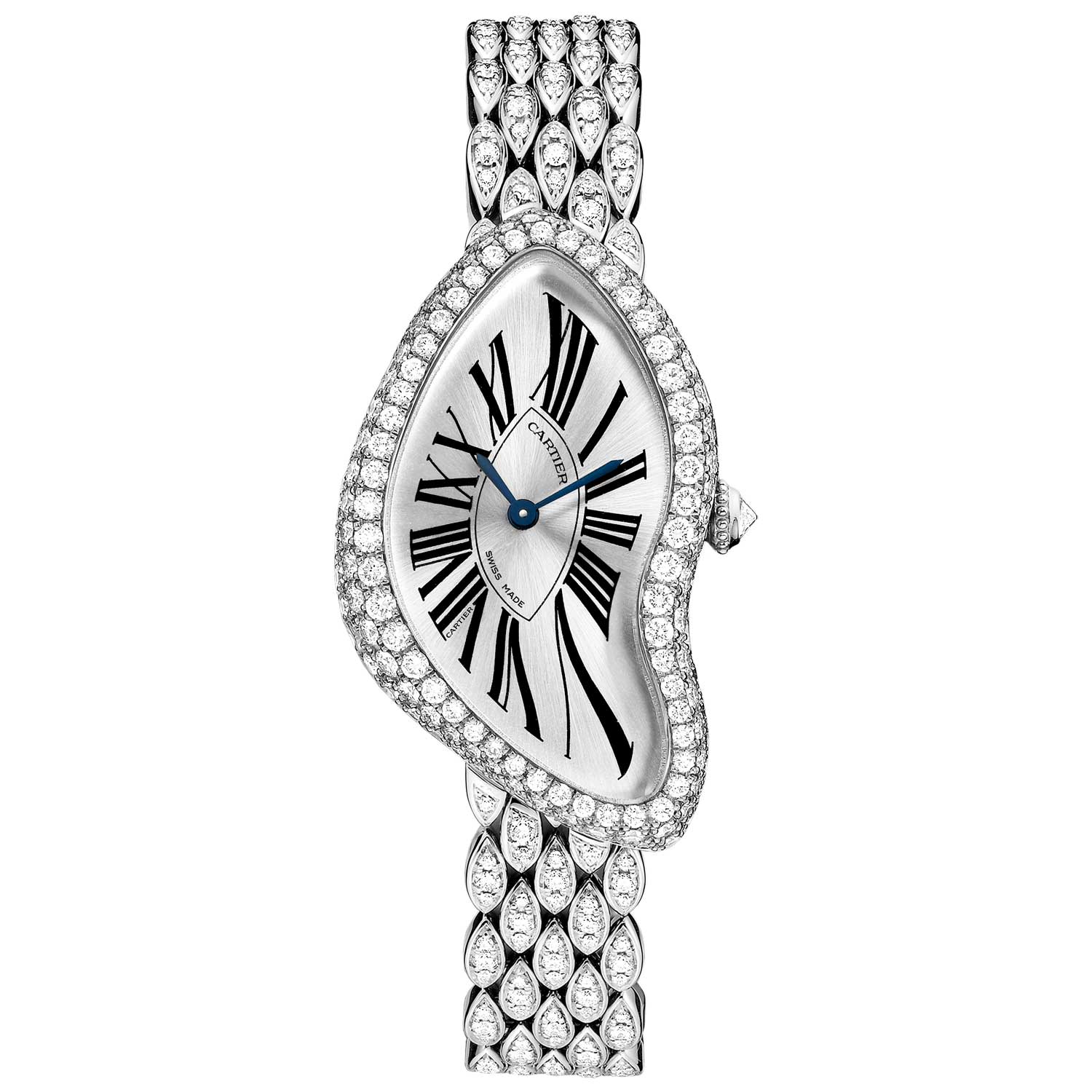
The white gold full diamond limited edition Crash from 2013, produced in 67 pieces. (image: Cartier)
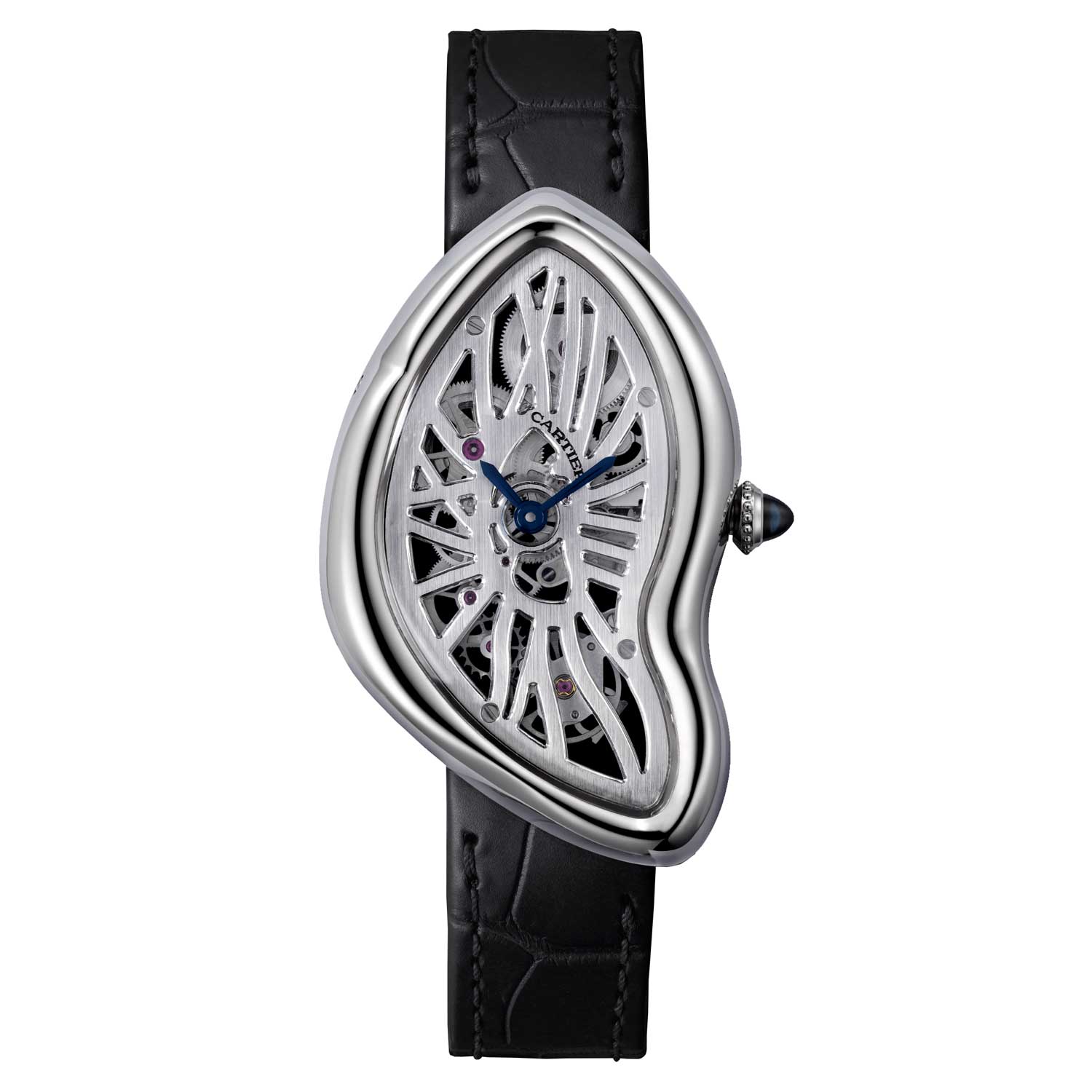
In 2015, the Crash became skeletonized by the hand of the preeminent Carole Forestier Kasapi. This is the platinum version powered by the manual wind 9618MC movement with two barrels and 72 hours of power reserve. Made in only 67 pieces. (image: Cartier)
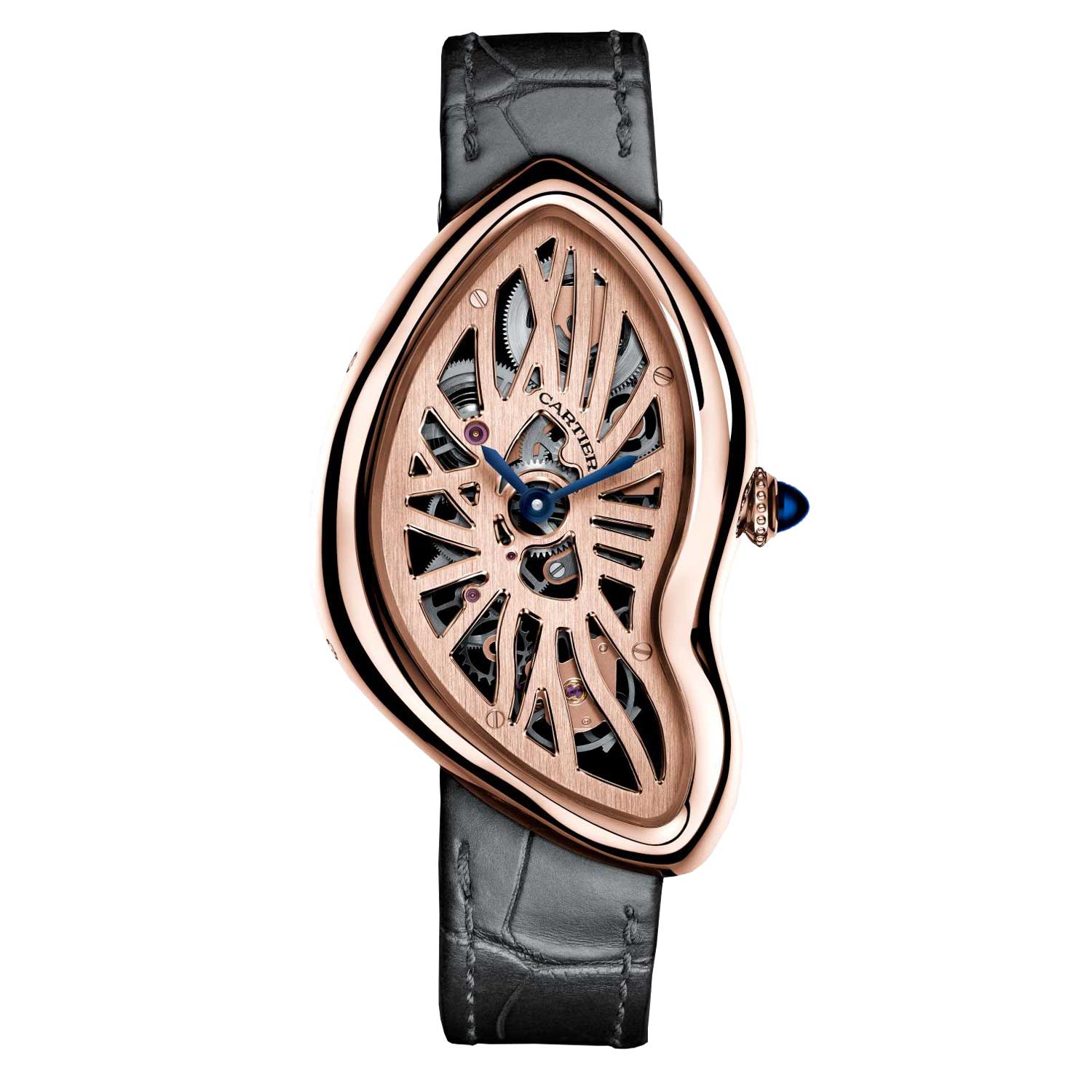
The skeletonized Crash returned in 2016 but this time in pink gold. It had the same movement as the 2015 model and also made in 67 pieces. (image: Cartier)
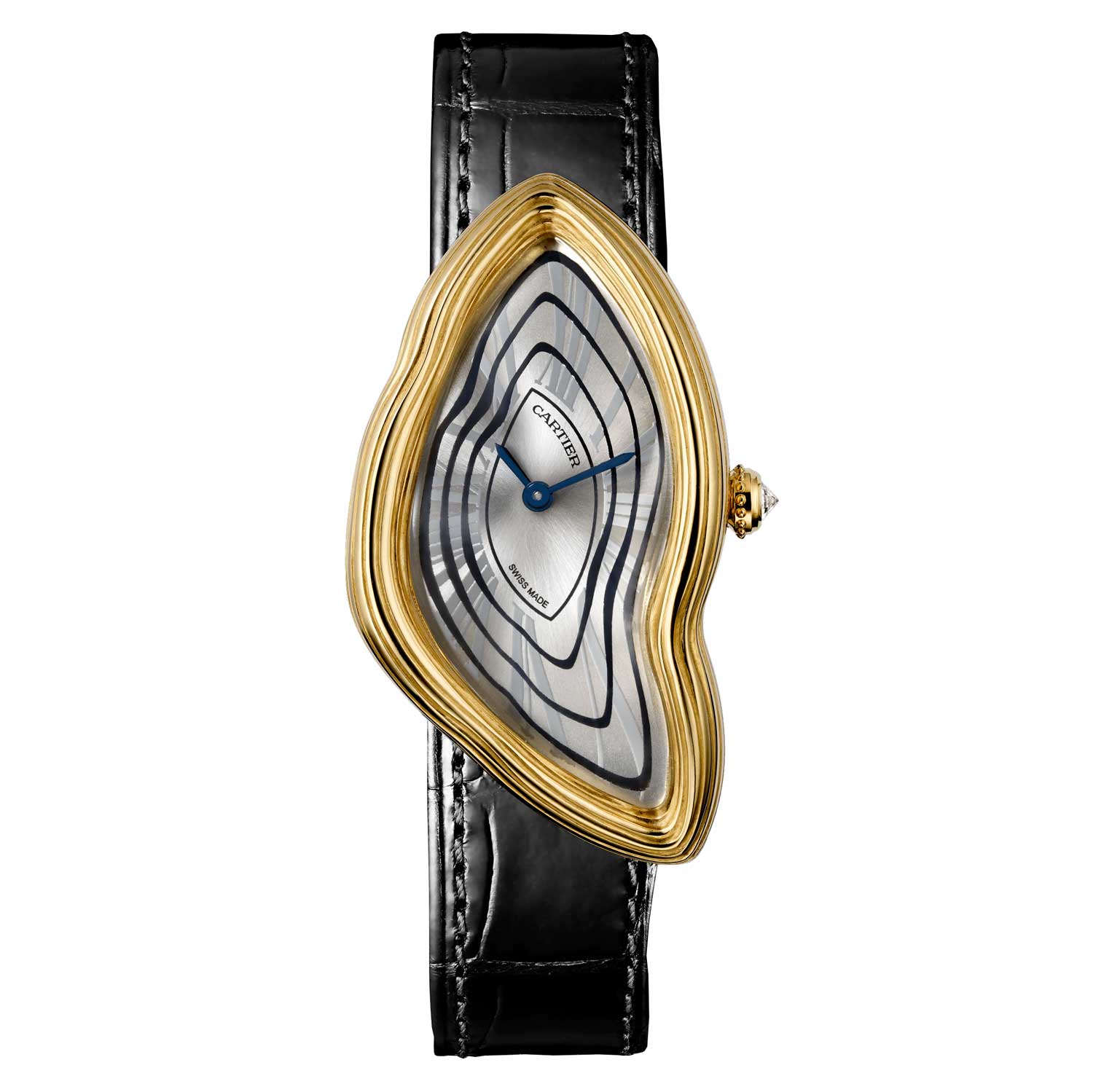
The Crash Radieuse from 2018 not only had a unique dial and case design, but a diamond cabochon which sets it apart from other Crashes. It came in a 50-piece limited edition. (image: Cartier)
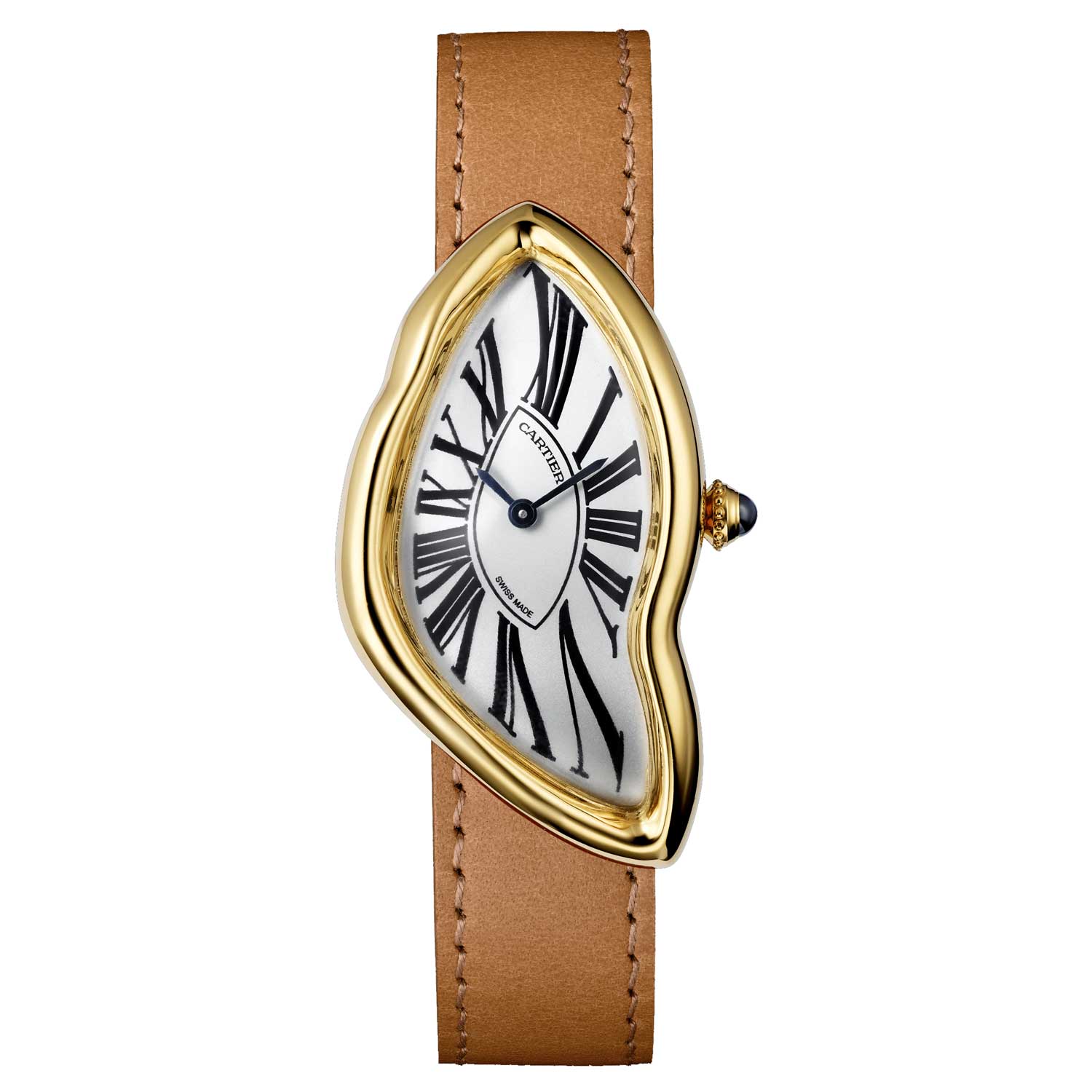
Cartier announced a reissue of the Crash in 2018 that would only be available from the London boutique and with only one piece being made per month. Note that the dial says 'Swiss Made' instead of 'London'. (image: Cartier)
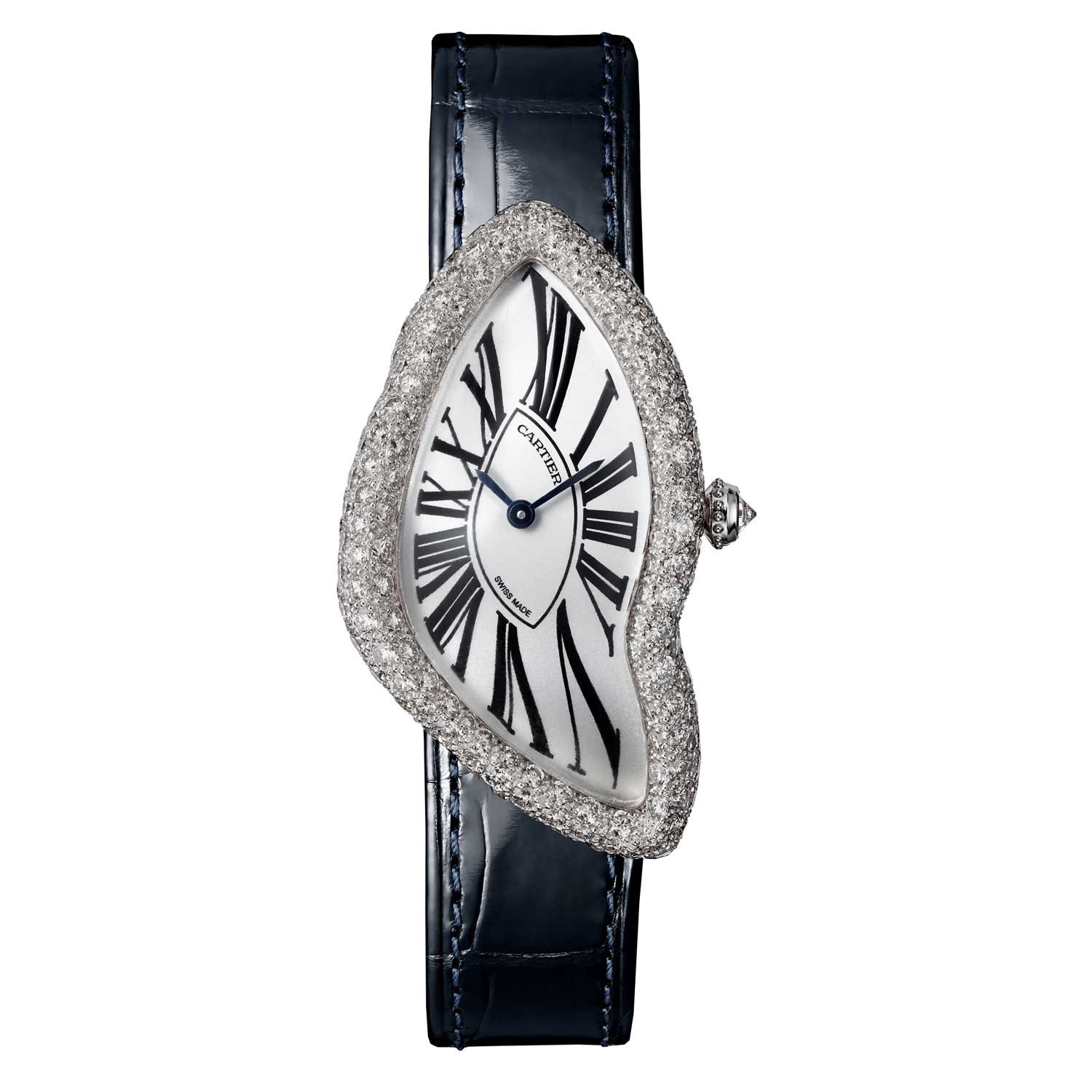
The 2018 reissue also saw a limited edition in white gold with a diamond set case, made in only 15 pieces. (image: Cartier)
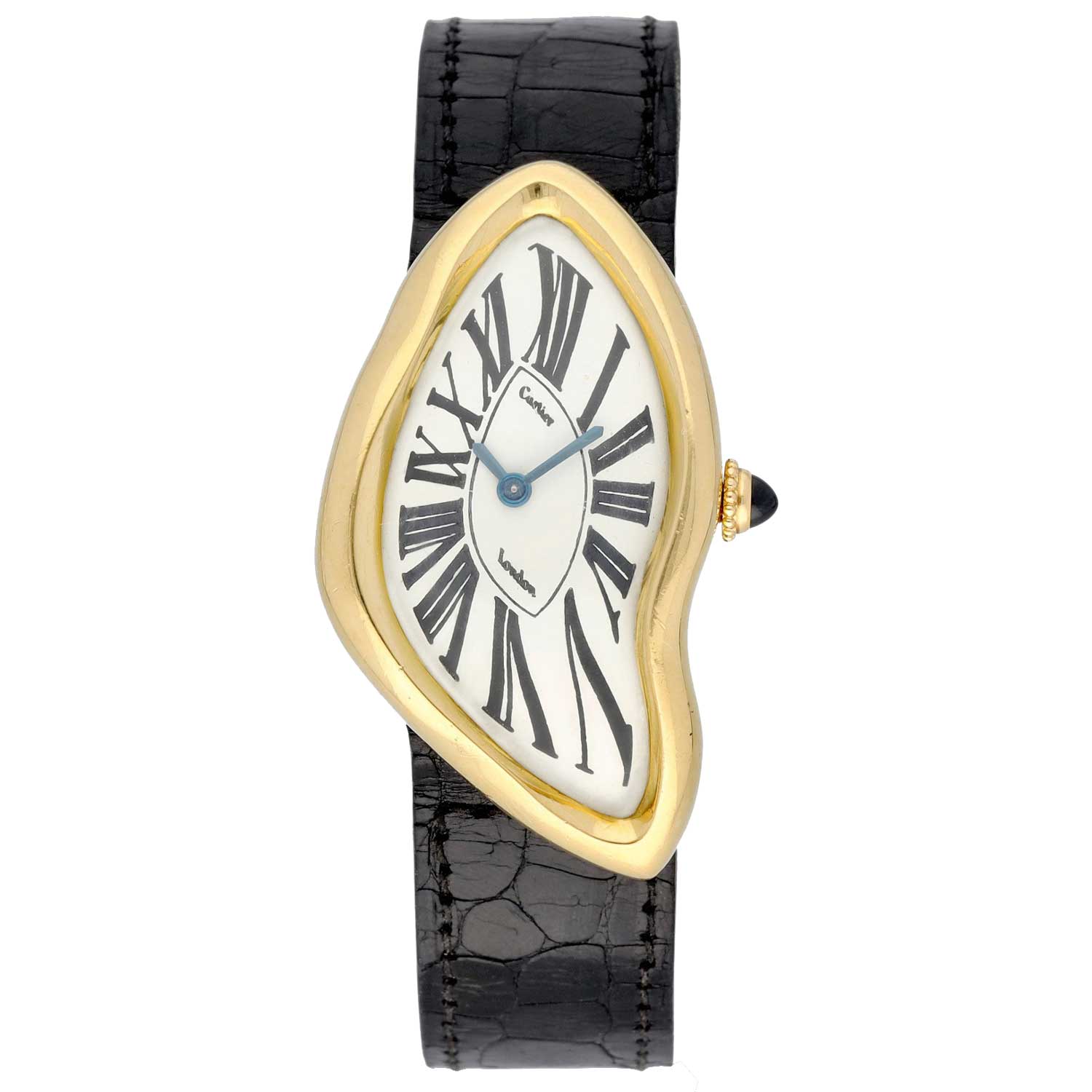
The record-breaking original London Crash that sold for CHF806,500 at Sotheby’s Important Watches: Part I in 2021. (image: Sotheby's)

A Paris Crash from the 1991 reissue sold for € 201,500 at Monaco Legend Auctions in October 2021. (image: Cartier)

Nick Foulkes
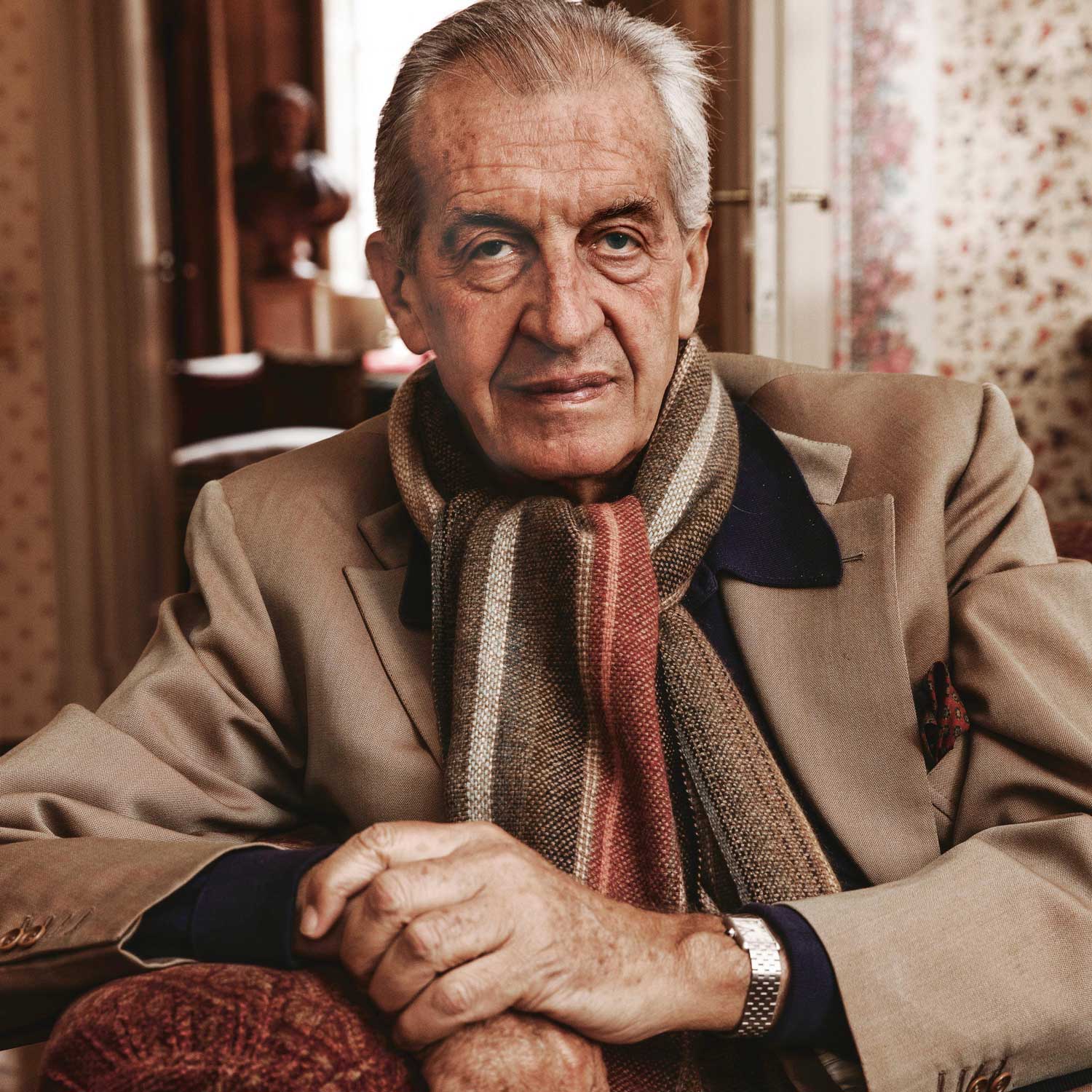
Auro Montanari
The Cartier NSO Program
OK, so now that we’ve defined the Crash as one of the most desirable watches on the planet, how does someone go about acquiring one? At the moment, there are three pathways. Ah… alas, much like the grasshopper trying to attain spiritual nirvana, though there are multiple roads to the destination, none are easy.
The first is the secondary market or auction scene, but as explained, that comes today with a hefty premium. The second is to be placed on the waiting list of the Cartier London boutique; however, from what I understand, the list is now so long that even getting on it is not easy. The third way is to be given the opportunity for an NSO or “New Special Order,” where truly fortunate clients are able to create watches based on Cartier’s existing shapes. There are, of course, certain restrictions; for example, if you err too much beyond the realm of what is Cartier, it will be politely suggested that you rein yourself in. The individual with final approval for all NSO projects is the legendary Pierre Rainero, head of Cartier’s patrimony and a living repository of all things Cartier.
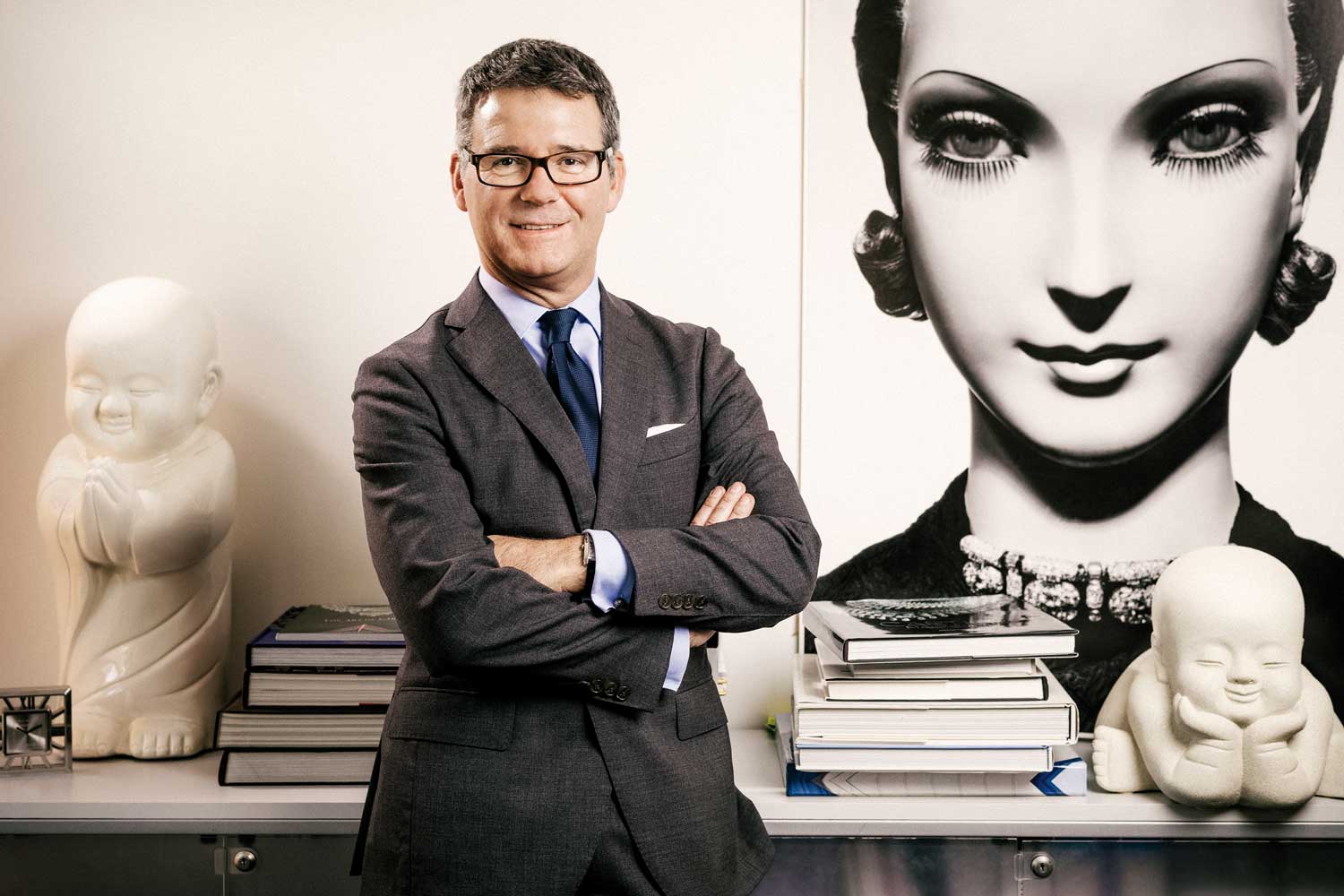
Pierre Rainero - Cartier's Director of Image, Heritage and Style since 1984. (image: Cartier)
In 2018, I was given the opportunity to create my first NSO watch. I had attended SIHH that year where they launched the platinum Tank Cintrée. Because they were unable to allocated me the number of the watch I had initially requested, I was asked if creating a special order watch based on the Cintrée would be something I would consider. More than “consider” it, I was blown away by the kindness of the offer. On a trip to Burgundy in France, that one NSO project actually became two watches, one for myself and one for my friend Mo Coppoletta. When I showed Mo the beautiful renderings Cartier had made for the watch, he was so smitten with one of them that I requested it for him on his behalf and, miraculously, it came to be. We both absolutely loved our watches and you can listen to the story about those timepieces here.
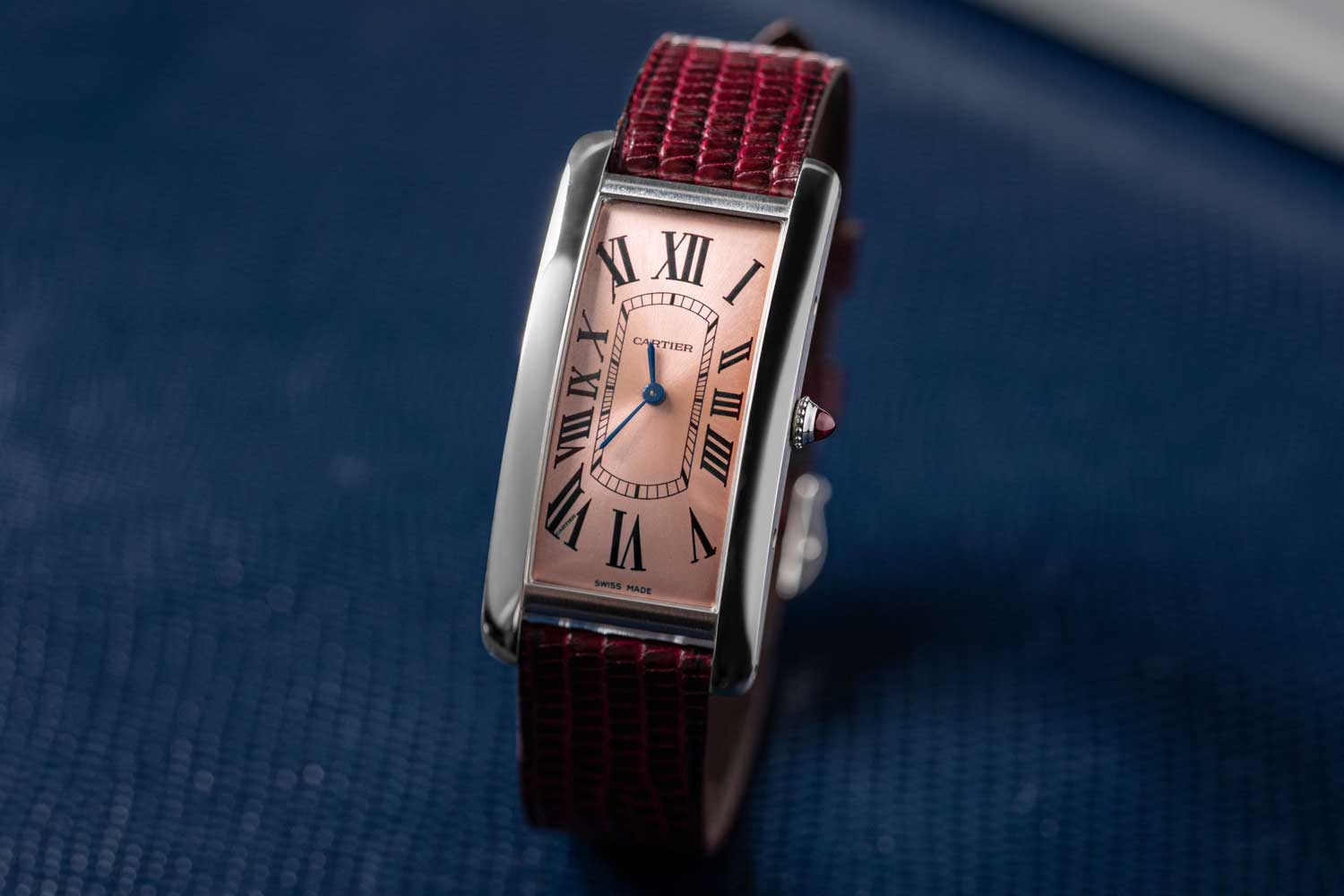
The author's first pièce unique commission with Cartier - A platinum Tank Cintrée with pink dial and burgundy numerals. (image: Revolution©)
Follow that Light
As I began to think of my next Cartier, the dream that quickly materialized was for a Crash. But what is important to know is that while it is rare to be permitted entry into the NSO program, it is even rarer to be allocated a Crash. Nonetheless, I politely requested one, and when I was given the answer that I could proceed, I almost couldn’t believe it. Now came the question of what to create together with Cartier’s design team and the spectacular Hazel See, Cartier’s watch manager in Singapore. Having gone through the NSO process once before, I felt emboldened to suggest something wildly ambitious but at the same time rooted in substance. If you look at the various limited editions I’ve created, you can see that I have strong affection for luminous watches. To me, the light signature created by a watch at night is as strong an identifier of its personality as its appearance in the daytime. Having looked through the history of the Crash, I realized that there had never been a luminous version of the watch made. But I thought such a timepiece would be fascinating. Because of the unique shape of the Crash, how it sits slightly canted clockwise and because of the kink in the case that appears at four and five o’clock, I thought that a luminous version would be instantly identifiable in the dark. Of course, I realized that the likelihood of this being approved was slim. But as the Latin saying goes, “Audentes Fortuna Juvat,” or fortune favours the bold. When I broached this with Hazel, she agreed that it was a long shot, but she also saw nothing wrong in submitting the request. Then came the nail-biting months of wondering what Rainero would think. I consulted with Ku who told me, “Cartier seems pretty hesitant to go down the luminous route.” Soon, I received my reply and, to my very genuine amazement, it had been approved. Incredible. I remember shouting, “God bless you, Pierre Rainero!” when I heard the news.
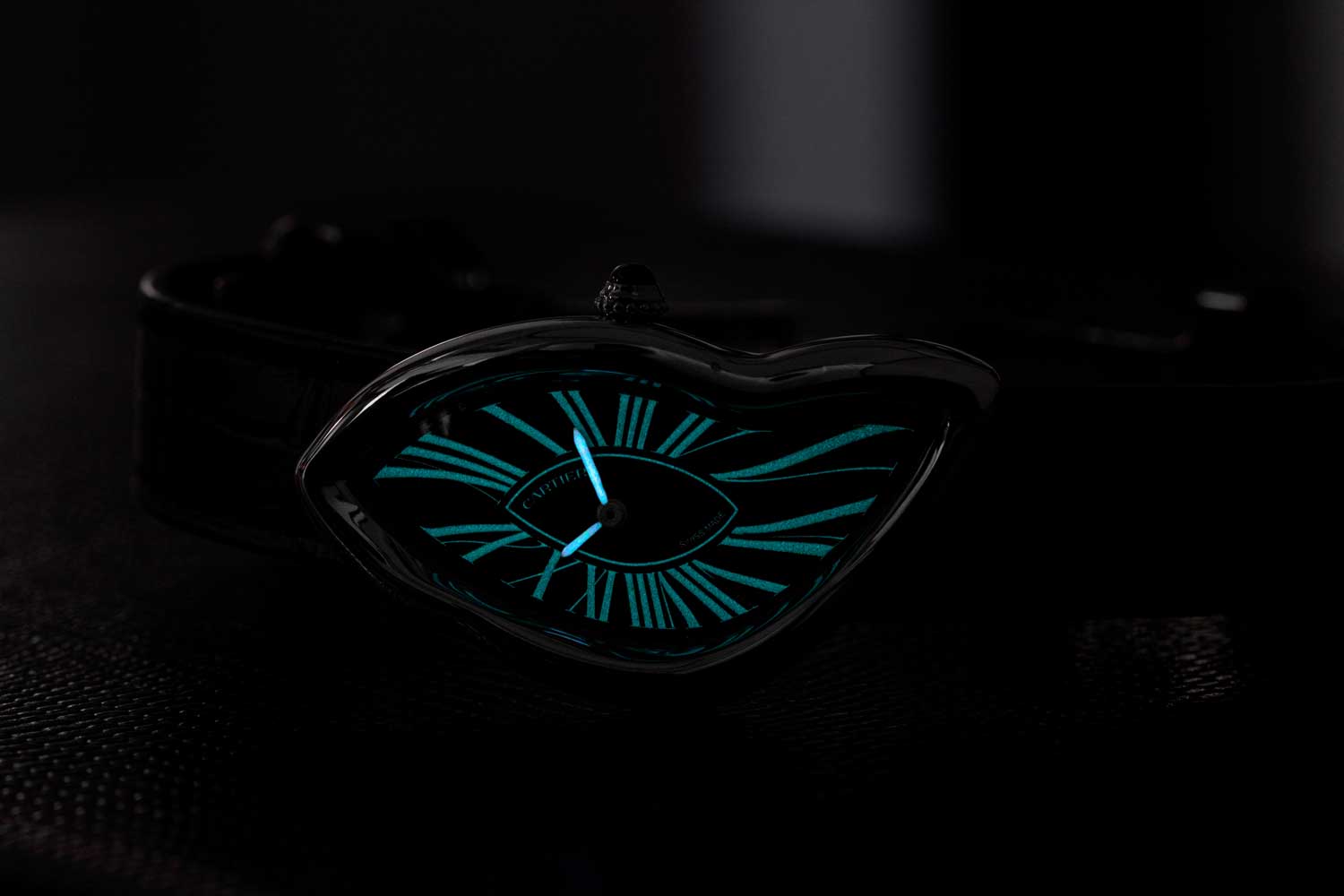
The world's first luminous Cartier Crash in white gold. (image: Revolution©)
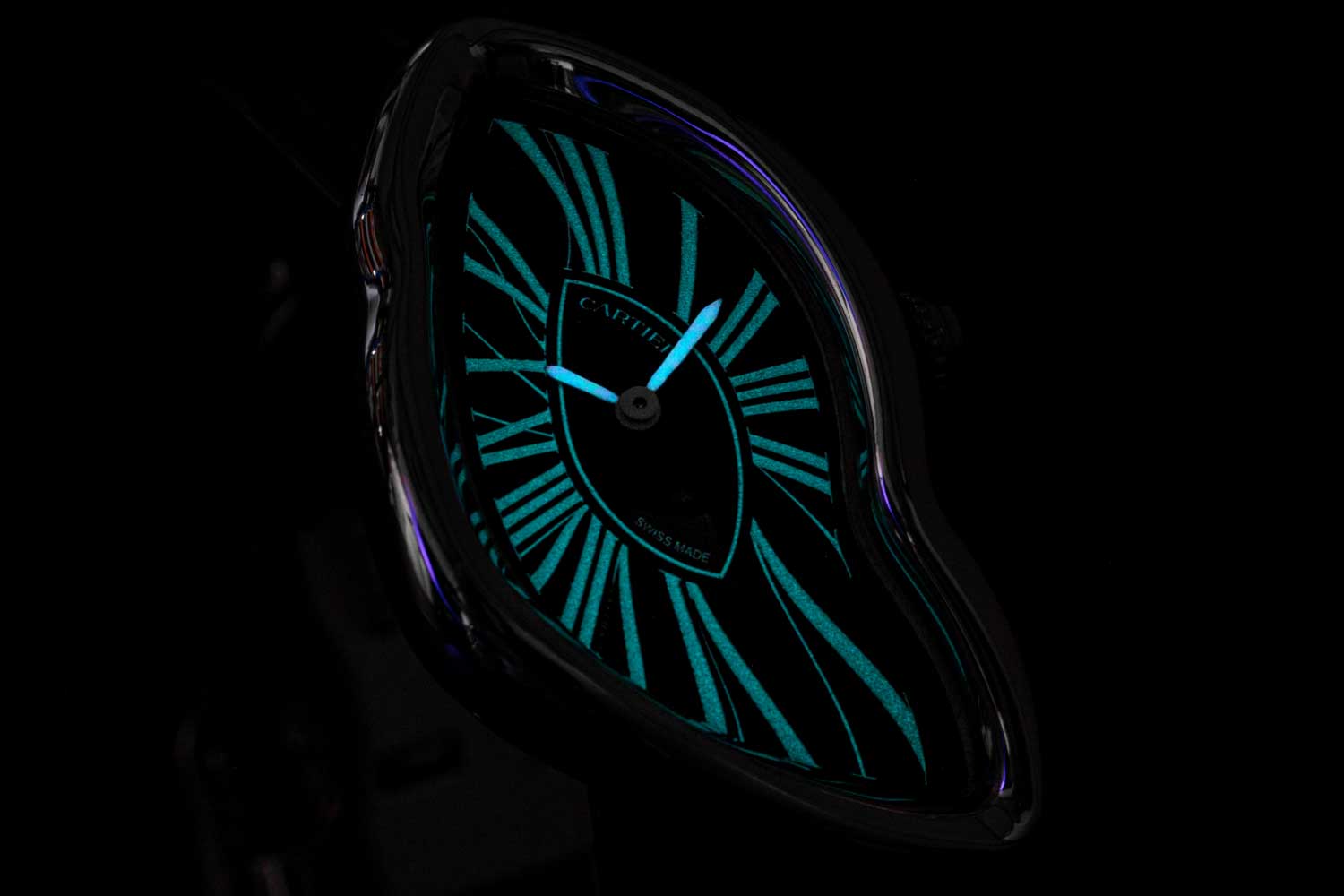
The author was very specific about not wanting the lume to be overly bright and Cartier nailed the shade and intensity of the lume to a T. (image: Revolution©)
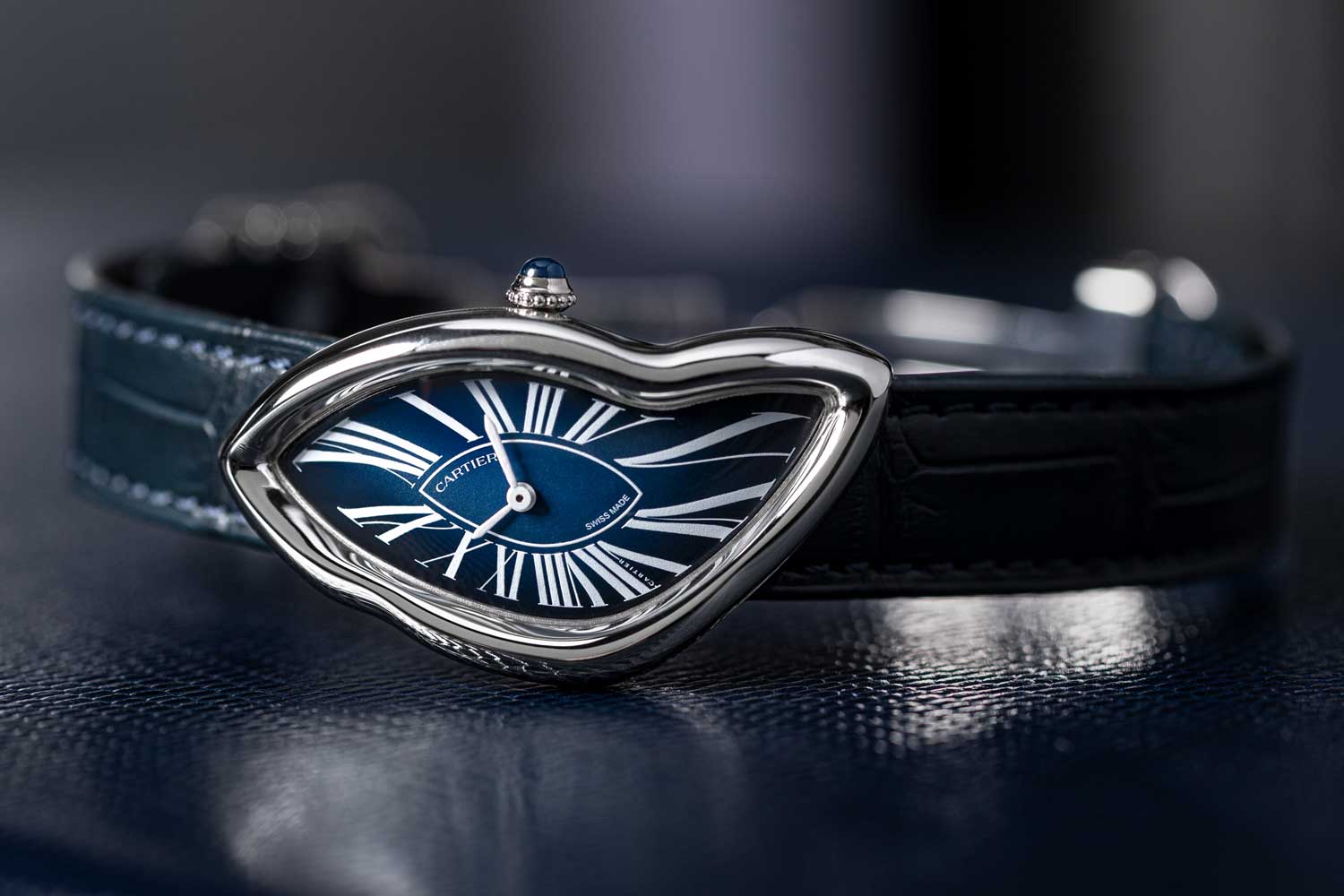
Suitable in all styles of dress and for any occasion - this could very well be the ultimate dress watch. (image: Revolution©)
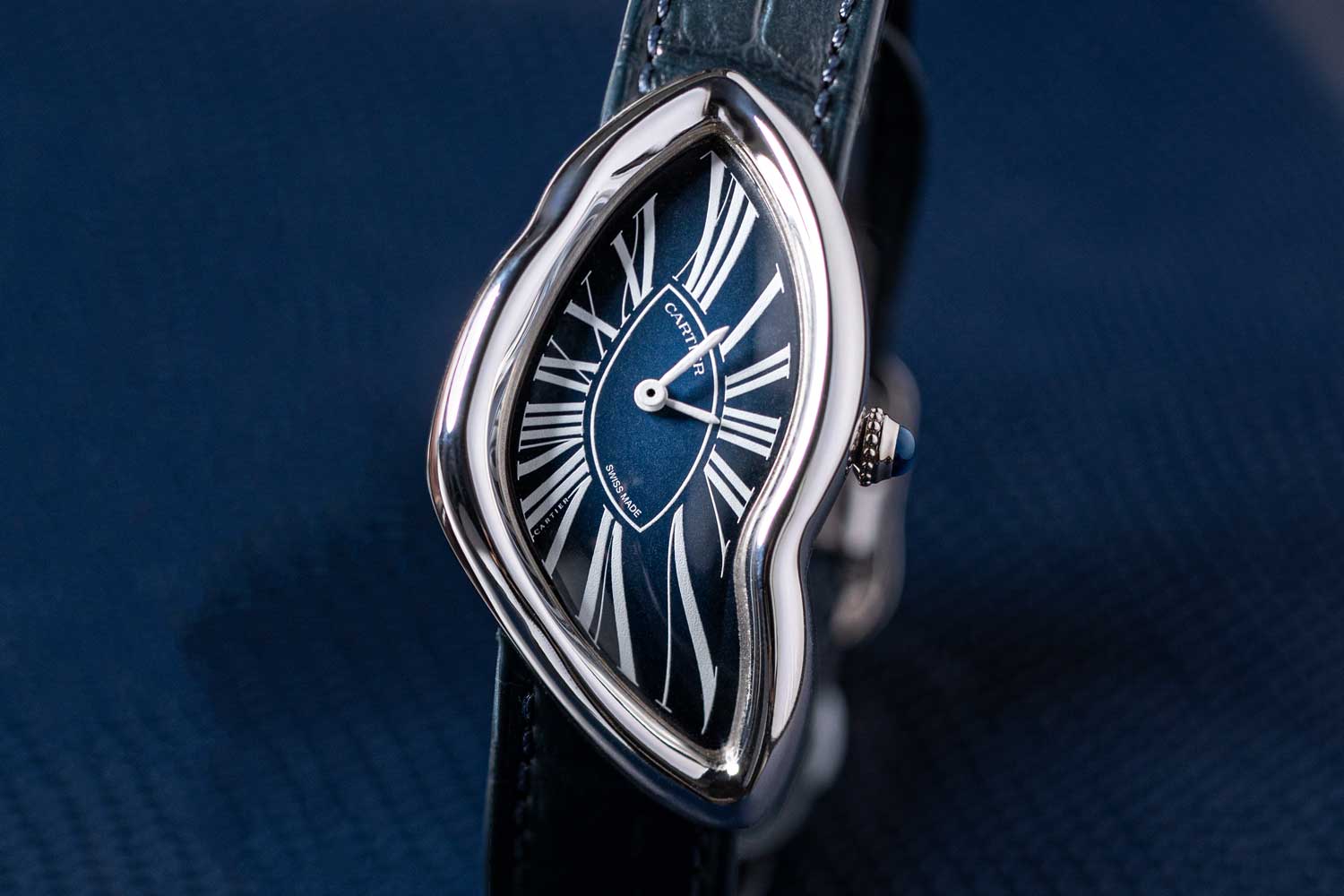
The Cartier Crash First Light has a very subtle fumé effect on the dial that graduates from light in the center to dark at the edges. (image: Revolution©)

Two very special Cartiers for a very special collector. (image: Revolution©)
Special thanks to Cartier’s regional CEO Cecile Naour, and Anne Yitzhakov, Imane Laasri, Hazel See, Gregory Hallak, Richard Gan and Clayton Lau of Cartier Singapore.










